|
|
Post by chasensfo on Dec 25, 2022 11:16:18 GMT -5
//Air Zimbabwe 1998 v3 (25DEC22; Added missing Fokker 50, added livery variations for the fleet by Michael Pearson) Air Zimbabwe (1964 - Present) IATA: HM ICAO: AZW CALLSIGN: AIR ZIMBABWE Air Zimbabwe is the national airline of the African nation of Zimbabwe, based in Harare(HRE). Much like the nation of Zimbabwe itself, the airline had a very troubled history with various periods where all flights were suspended for months or years at a time due to civil unrest and\or financial issues. Air Zimbabwe's roots trace back to 1964 when Zimbabwe was known as Rhodesia and the airline became a Rhodesian subsidiary of Central African Airways(CAAC). In 1967, CAAC failed and Rhodesia's airline began independent flights to keep the country connected with commercial air service. The airline began trading as Air Rhodesia, and gradually added more modern aircraft like Vickers Viscounts to the fleet and expanded in the region. Civil war broke out, and the airline had 2 aircraft shot down by militants, one of which had most of its survivors rounded up and slaughtered after the crash. The bloody fighting came to an end in 1979 when Rhodesia reclaimed its independence from the United Kingdom and became Zimbabwe, at which time the airline became Air Zimbabwe. In 1983, Air Zimbabwe merged with Affretair and added Boeing 720 jets, its first pure jet type. From that point, other jets like the 737 and 707 joined the fleet and expansion into Europe and other parts of Africa continued. Air Zimbabwe had an impressive route network in 1998, with a pair of 767s stretching across Europe serving both LGW and LHR in London and even Larnaca, Cyprus(LCA)! A good place to see the 767s is LGW, as most of the week one spends an entire day there for crew rest. The domestic and Southern African routes are mostly flown by a pair of 737-200s, a BAe-146-200, and a BAe-146-100, which also all keep very busy. The schedule only called for one very busy BAe-146, though at the time an Albino BAe-146-100 was leased from Air Botswana. I split the schedule so that the BAe-146-200 flies most of the week and the smaller BAe-146-100 flies on Tuesday, Saturday, and Sunday which are the least heavily traveled days of the week. The BAe-146-100 was only in the fleet for a few months before moving to Zimbabwe Express Airlines for a short time and then going to England to be reconfigured for a return to Air Botswana. In 2012, Air Zimbabwe found itself close to $200 Million USD in debt with it's various parties involved in its Europe flying and was forced to suspend operations. For the next several years, service became very sporadic and often non-existent. Today, the airline has recently started operating some repatriation flights during the COVID-19 pandemic and is still flying, and said to be putting 2 ex-MAS 777s into service eventually. The schedule called for an extra 737-200 for a few trips to South Africa, so I assigned them to the 707-300 which was active in 1998 when needed as a substitution (kept on standby), but not used in the flight schedule and retired later that year. There was also an airworthy Vickers 748D Viscount in the fleet in 1998 wearing "50 years of safe flying" titles and kept by the maintenance hangar, which my 1998 HRE ADEX accounts for. I have based that aircraft in HRE, doing touch and goes between roughly 9AM-10AM Monday to Friday if you'd like to watch, and it did do them rarely in real life to remain airworthy at the time. If you don't want the 707 and Viscount flying, simply delete them or replace the 707 with a fake 737-200 (one was leased to Uganda Airlines at the time thus not included). The Fokker 50 and BAe-146-200 were largely down for mechanical work but did sectors during other parts of 1998. As they are not included in the schedule, I broke up the BAe-146 schedule to cover all 3 aircraft, which will otherwise have realistic huge ground times. Also, the LHR flight only fit in if I deleted the HRE-LLW-LGW route or delayed the LHR flight, so the LHR flight lands about 1.5 hours late in LHR and does a 90-minute quick turn arriving under an hour late to HRE. HRE is one of the best places outside of JNB to see most of the rare and small airlines of Central and Southern Africa with 1998 traffic. All repaints are completed: FSPX 767-200 + NAAI 707-300\Fokker 50 + FAIB 737-200 + CPAI Viscount 700 + FMAI BAe-146-200 by Michael Pearson: mpai4fs.com/category/repaints/airlines/air-zimbabwe/FAIB 767-200 (just paint over the website address for 1990s livery): library.avsim.net/search.php?SearchTerm=762azw.zip&CatID=root&Go=SearchNAAI 707-300C (FS9 Native): library.avsim.net/search.php?SearchTerm=texture.azw.zip&CatID=root&Go=SearchFMAI BAe-146-100 by myself: drive.google.com/drive/folders/1T6otoVJ6232F9-T7oz0KJdID8tV3Q5Y8Rick Piper Viscount (FS9 Native): library.avsim.net/search.php?SearchTerm=um_ynb.zip&CatID=root&Go=Search767-200: 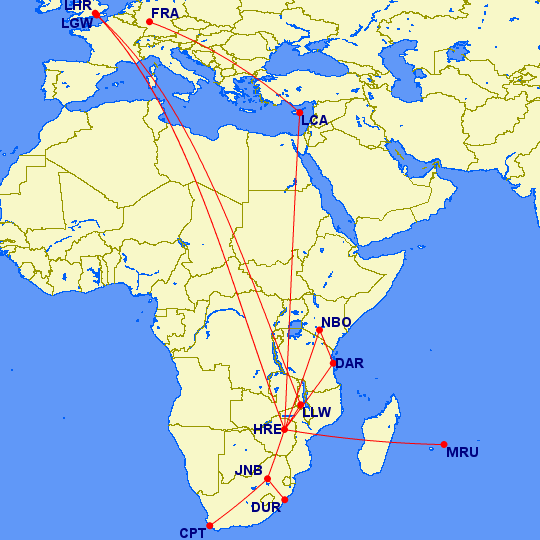 737-200: 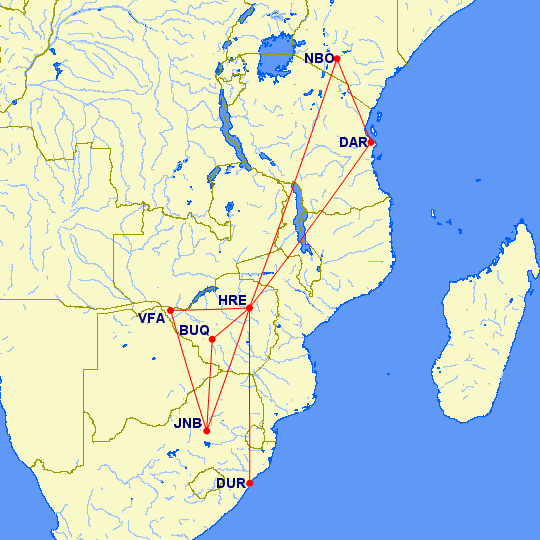 BAe-146-100\200:  Download Air Zimbabwe 1998 v3 Flightplans Here Download Air Zimbabwe 1998 v3 Flightplans Here |
|
|
|
Post by chasensfo on Dec 26, 2022 6:59:25 GMT -5
I had a brain fart and left the Libyan A320 repaint link by cgold out of those plans when I did the update adding that aircraft, scroll back up and you'll see the link. //Ghana Airways 1998 v2 (26DEC22; Added missing DC-9-50 that was still in the fleet during 1998 and an Air Force Fokker 28 used occasionally, added livery variations for fleet repaints by Michael Pearson, re-ordered aircraft for better parking in ACC, changed cruise speeds to AIG standard) Ghana Airways (1958-2004) IATA: GH ICAO: GHA CALLSIGN: GHANA Ghana Airways was the national airline of Ghana, in Western Africa, and based in Accra (ACC). Interestingly, the airline was initially privatized but soon absorbed the government not long after starting operations. Accordingly, Ghana's own air force was operating civilian transport aircraft on behalf of Ghana Airways for the majority of it's history using various equipment, but mostly Fokker aircraft. Early on, the airline flew with Bristol Britannias and IL-18s but joined the jet age early on with the first Vickers VC-10 delivered in 1965 with these aircraft mostly being deployed on flights to Europe. As domestic travel within Ghana and even regional travel to the majority of nearby nations was very undeveloped with little demand, the focus of Ghana Airways was mostly on long haul into the 1970s. The first ex-KLM DC-10 joined the fleet in 1980, which allowed for further expansion into Europe. In the 80s and 90s, the Ghana Air Force was commonly operating Fokker 27s and Fokker 28s for the carrier under the "Ghana Link" branding. These primarily domestic flights were supplemented by Ghana Airway's own DC-9-50s which it operated both domestically and across Western and Central Africa with 2-3 examples in the fleet at a time mostly through the 80s and 90s. The network had expanded to the United States with flights to New York (JFK) by the 1990s, making Ghana Airways the only West African carrier other than Air Afrique to offer transatlantic flights. Many of the longer multi-stop regional routes were timed to connect passengers on and off of flights to the United States. One of the DC-9s was destroyed in a crash landing in 2000, and another was introduced to the fleet in a new livery. MD-11s were occasionally leased or sub-leased from World Airways to operate JFK services. Timed with the global decline in air travel after the 9/11 attacks in the USA, the airline never recovered from losing a significant portion of its regional fleet, shutting down in 2004. Ghana Airways was only 6 years from the end of a long history in 1998. The small fleet consisted of a pair of DC-9-51s, which flew around West Africa, sometimes on 6-stop flights, while the 2 DC-10-30s(one of which was still in the old livery) flew to New York(JFK) as well as 3 European routes. Ghana Airways was one of the very few African airlines to serve the United States in the late 1990s. Though based in ACC, Abidjan (ABJ) seems to have had more flights and destinations from the DC-9 fleet. A single Fokker 27-600 was operated by the Ghana Air Force as "Ghana Link" at the time using Ghana Airways' codes and callsigns. The Fokker 27 and Fokker 28 both operate only once weekly with huge ground times, while the rest of the fleet is seldom seen for very long in ACC and kept on the move. Be sure to assign your Ghana Air Force aircraft an aircraft.cfg entry giving them the Ghana Airways callsign as well as "atc_parking_codes=GHA; atc_parking_types=GATE" to ensure they park on gates and not in the military aprons. The fleet is completed: AIG DC-9-50 fleet + FMAI Fokker 28-4000 + CPAI Fokker 27-600 by Michael Pearson: mpai4fs.com/category/repaints/airlines/ghana-airways/AIM DC-10-30 Old Colors (FS9 Native): library.avsim.net/search.php?SearchTerm=aim_dc1030_ghana_oc.zip&CatID=root&Go=SearchAIM DC-10-30 New Colors (FS9 Native): library.avsim.net/search.php?SearchTerm=aim_dc1030_ghana_airways.zip&CatID=root&Go=SearchAIG DC-9-50 by Christian Gold (FS9 Native): drive.google.com/file/d/13vQUtwyIswBrVt-lH3rcjeMaJwuVfFhL/view?usp=sharingDWAI Fokker 27 + FMAI Fokker 28 Ghana Air Force (FS9 Native): library.avsim.net/search.php?SearchTerm=fskm_ghana_air_force_pkg.zip&CatID=root&Go=SearchDC-10-30:  DC-9-50: 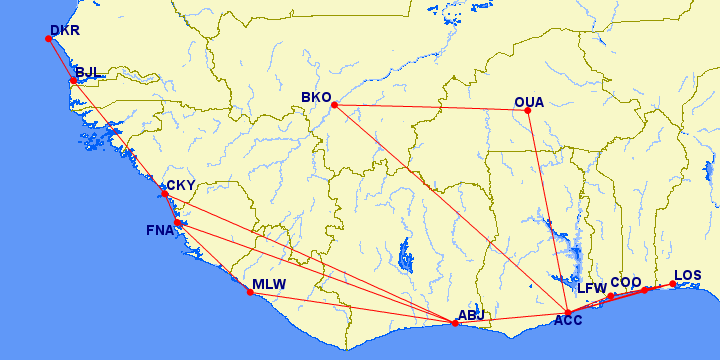 Fokker 28-4000\Fokker 27-600 operated by the Ghana Air Force: 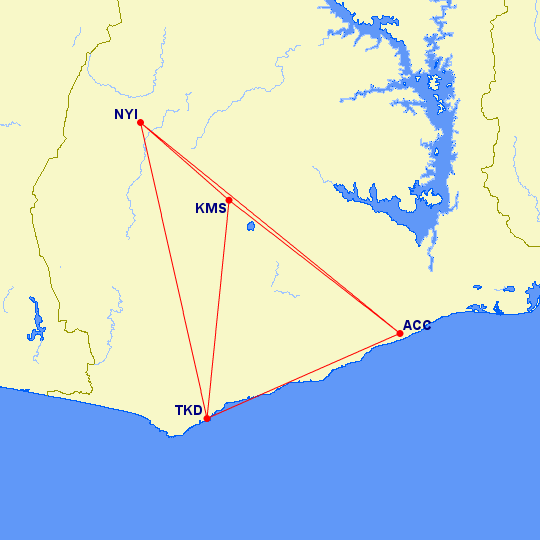 Download Ghana Airways 1998 v2 Flightplans Here Download Ghana Airways 1998 v2 Flightplans Here |
|
|
|
Post by chasensfo on Dec 26, 2022 7:40:36 GMT -5
//Aero Zambia 1998 v2 (26DEC22; added variations for Micheal Pearson's repaints, modified cargo plans to avoid the cargo terminal in HRE overcrowding, changed aircraft order for better AI parking, changed cruise speeds to AIG standard) Aero Zambia (1995-2000) IATA: Z9 ICAO: RZL CALLSIGN: AERO ZAMBIA Aero Zambia was started in 1995, based in Lusaka(LUN), and offered scheduled passenger flights with a pair of 737-200s to nearby African cities. Initially, the carrier operated with the pair of 737s as a small regional carrier primarily connecting passengers to Zimbabwe and South Africa. However, things took a mischievous turn in the late 1990s. By 1998, a DHC-6 Twin Otter had been added, as well as a pair of 707-300Cs and a 727-100C for cargo operations. Unfortunately, those hastily added cargo jets turned out to be used for smuggling arms for Eritrea during a conflict with Ethiopia and the operation was short-lived with the carrier quickly caught performing arms smuggling. Still, being in a conflict-engulfed region of Africa, the carrier was allowed to continue operations, and to continue smuggling munitions. Later that year, the 727 was hit by a fuel truck during illicit deliveries in Asmara (ASM), and then was intentionally destroyed by small arms fire (perhaps to cover the crime) and sits there to this day on display in full Aero Zambia colors. One of the 707s was seized a few months later for arms smuggling and impounded. The airline had its operating certificate revoked for safety reasons in 2000, but it was widely speculated that the move was purely political for reasons unclear but likely related to Entriean military ties. I was able to simulate accurately cargo routings based on information about arms smuggling as well as the DHC-6 regional flights with information on local services offered by the carrier. However, times and flight numbers are representative for the non-scheduled flights. The cargo fleet is most often seen in ASM, HRE, and JNB. 737 flights are scheduled from the OAG book. As HRE only had room on the cargo apron for 2 large and one smaller cargo aircraft and I accidentally sometimes had all 3 of the Aero Zambia cargo aircraft there at once, I modified the plans for better parking to avoid crowding the apron and forcing cargo planes onto the passenger apron. An FS9-P3Dv4 version is included using airport codes that were discontinued in P3Dv5\MSFS. Fleet repaints by Michael Pearson may be found here: mpai4fs.com/category/repaints/airlines/aero-zambia/707-300C Charter Cargo: 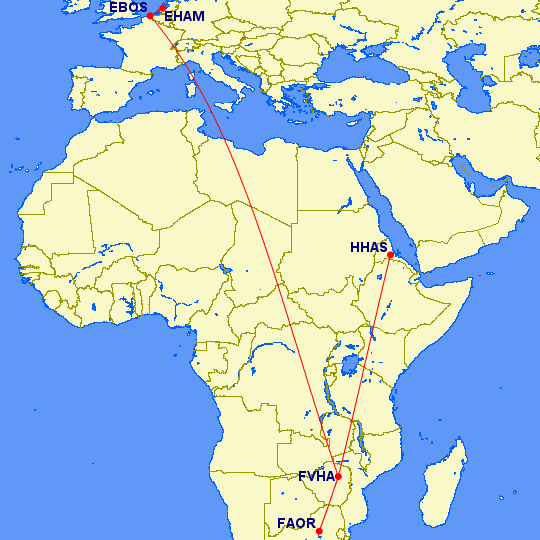 727-100C Charter Cargo (aka arms smuggling): 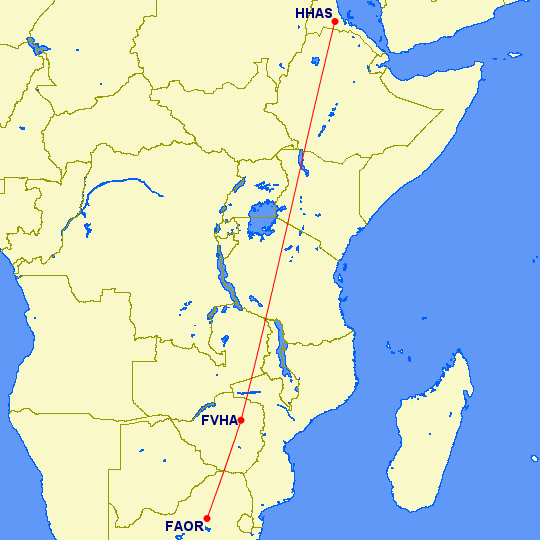 737-200: 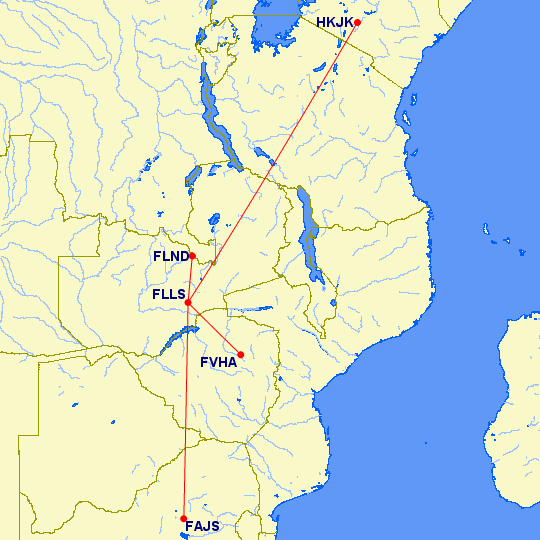 DHC-6:  Download Aero Zambia 1998 v2 Flightplans Here Download Aero Zambia 1998 v2 Flightplans Here |
|
|
|
Post by chasensfo on Dec 26, 2022 7:48:07 GMT -5
//Nigeria Airways 1998 v3 (26DEC22; added Mahfoozh Aviation 727-200 operated as a Hajj Shuttle to JED thanks to Micheal Pearson for finding it) Nigeria Airways (1958-2003) IATA: WT ICAO: NGA CALLSIGN: NIGERIA Nigeria Airways was the national airline of Nigeria, based in Lagos(LOS). The airline was initially part of the West African Airways Corp. which was founded immediately after WWII. When Nigeria claimed independence in 1958, the Nigerian assets of West African Airways Corp. left the company and began independent operations as Nigeria Airways. Initially, the airline was partially privatized, with BOAC having a 16% stake in the company and providing initial support along with Bristol Britannia aircraft for long-range flights. Under the sponsorship of BOAC, Nigeria Airways was one of the first in Africa to welcome the jet age with DeHavilland Comet jets and was also an early VC-10 customer. The first DC-10 was added in 1976, and the airline became a very early operator for the A310-200 in 1983. The airline at one point had a vast network stretching as far as Hong Kong and all across the Middle East, in addition to Europe. But a reputation for poor service and worse reliability prompted Nigeria Airways to reveal a temporary new brand image, with aircraft starting to appear in a bold new livery in the early 1990s. In 1994, a lone A310 was painted in another experimental livery that was not applied to the rest of the fleet (with that aircraft ultimately retiring in those colors). With the flying Nigerian public, the flying elephant on the tail had become the butt of jokes about how elephants are clumsy and can't fly, so the elephant was not included in this new livery. Oddly, this new image was abandoned, and by the late 1990s, all remaining aircraft were back in the original livery again with the rest having been retired or repainted. Unfortunately, between the early 1990s and 1998, Nigeria Airways had drastically reduced its European network, ending service to places like London (LHR) and Amsterdam (AMS) and disposing of most of the A310s and DC-10s. Flights to Dubai (DXB) were now on a charter basis, with the DC-10 only doing a LOS-KAN-JED route once per week. A single PW-powered A310-200 and the DC-10-30 were doing the long haul flights while the A310s and several 737-200s were flying around Africa. The airline fell deep into debt, and Nigeria lost its national carrier in 2003. The failure of Nigeria Airways resulted in the creation of Virgin Nigeria Airways and the international expansion of Arik Air in the mid-2000s. Charter flights to DXB were actually listed in the OAG as one-off flights, so those are real and not representative. The DC-10 did maintenance in Miami (MIA) during the late 1990s, so I included a ferry flight there but it usually sits in Lagos unused as was realistic at the time. There were 3 A310s stored; 2 in Lagos (including the 1 in the interim livery) and one impounded in Brussels (BRU) (which become a cafe in 12/99) with none of the A310s in flying condition. I have them sitting idle in LOS as in real life, but since they were not in flying condition, they only do a touch-and-go landing once per week in the middle of the night in order to make the aircraft visible the rest of the time. I will give them proper parking spots by the Nigerian Airways hangar in LOS and the apron where the aircraft in BRU was stored when I do ADE files for those airports eventually, but the aircraft are segregated in case you wish to exclude them. As Nigeria has a large Muslim population, it runs frequent Hajj charters during the pilgrimage to Mecca (JED). Micheal Pearson discovered a 727-200 operated by Mahfoozh Aviation operating these flights in 1998, so I have included it with realistic routes using cities I was able to verify Hajj charters were operated from as well as legitimate tech-stop cities en route to JED. Flight numbers and times however are representative. Please make separate aircraft.cfg entries for the retired A310s using "atc_parking_codes=XNGA"; "atc_parking_types=RAMP" if you wish to keep them from parking on gates unrealistically. All repaints are completed: TFS A310-200 and FAIB 737-200 fleets + AIA 727-200 by Michael Pearson: mpai4fs.com/category/repaints/airlines/nigeria-airways/AIM DC-10-30 (FS9 Native): library.avsim.net/search.php?SearchTerm=aim_dc1030_nigeria_airways.zip&CatID=root&Go=SearchTFS A310-200 (FS9 Native; not exact livery used): library.avsim.net/search.php?SearchTerm=tfs_a312_nigeria.zip&CatID=root&Go=SearchDC-10-30:  DC-10-30 Charters and Maintenance ferry flights: 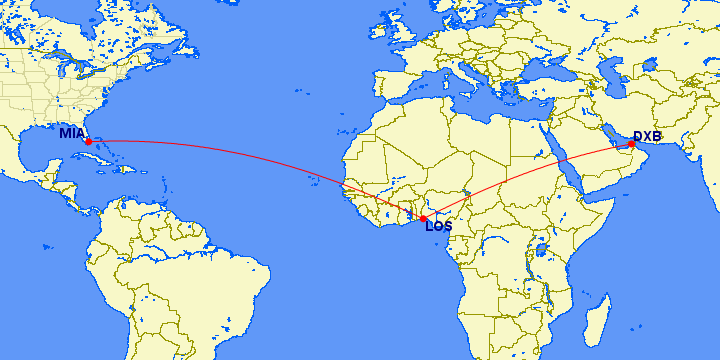 A310-200: 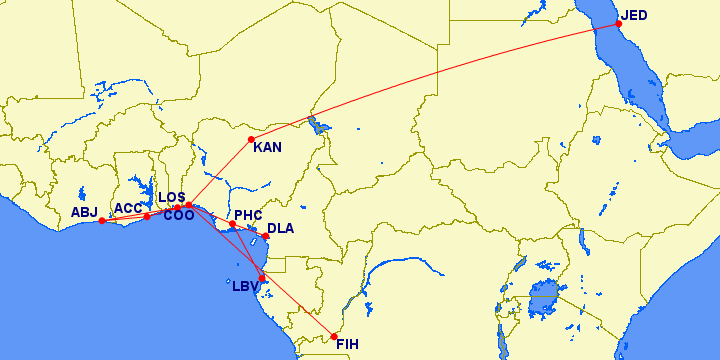 737-200:  727-200 Hajj flights operated by Mahfoozh Aviation: 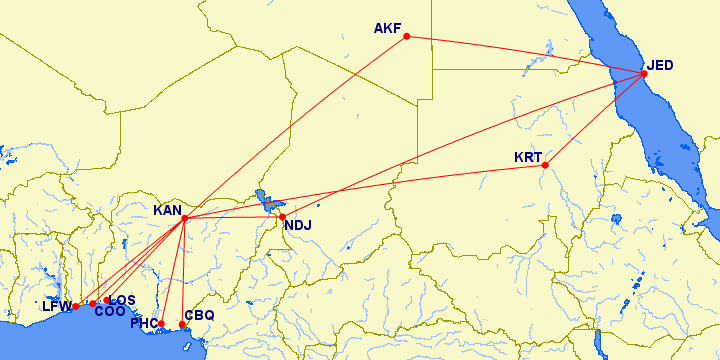 Download Nigeria Airways 1998 v3 Flightplans Here Download Nigeria Airways 1998 v3 Flightplans Here |
|
|
|
Post by chasensfo on Dec 26, 2022 10:17:54 GMT -5
//Kuwait Airways 1998 v2 (26DEC22; Added cargo flights, eliminated extra A340 flights, added variations for Micheal Pearson's fleet repaints, changed aircraft order for better AI parking, changed cruise speeds to AIG standard) Kuwait Airways (1954 - Present) IATA: KU ICAO: KAC CALLSIGN: KUWAITI Kuwait Airways Cargo operated by Air Transport International (1954 - Present) IATA: KU ICAO: KAC (use KACC for parking) CALLSIGN: KUWAITI Kuwait Airways is the national airline of Kuwait, the smallest nation in the Persian Gulf. Initially, the airline flew small props like the DC-3 on regional routes around the gulf, but the airline has always striven to upgrade to modern equipment. In 1962, Kuwait Airways became the first customer outside of Europe for the Trident jets and later used them to expand further across the Middle East and Eastern Africa. The airline was one of the first airlines in the region to fly the 737 in 1976 and ordered 727s soon after. By 1980, the carrier had 707s and was serving Europe, with Boeing 747s joining the fleet around the same time. With all this expansion and fleet renewal, it is surprising that Kuwait Airways was actually the most profitable airline in the region for many years. In 1986, the airline created Kuwait Airways Cargo with an A300-600R, which was replaced in 1991 by Boeing 707s operated by Lebanese carrier Trans Merdian Cargo (TMA), ending Kuwait Airways' in-house cargo operations. The airline continued to grow until 1990, when Iraq invaded Kuwait. The airline lost several aircraft in the conflict, and passengers and staff on some flights were imprisoned by Iraqi forces as POWs with some fatalities incurred. Kuwait City and it's airport were also badly damaged with the airport being the site of a major battle between Iraq and the intervening United States military. Despite Kuwait still recovering from the 1st Gulf War which saw several of its aircraft seized or destroyed, the airline was going strong as soon as it returned to service in 1991. The following year, the airline created Jet Airways of India in a joint venture with Gulf Air, with both carriers holding a 20% stake in the carrier. The route network expanded as far as Manila (MNL) and Chicago (ORD), with A340s and 777s joining the fleet later in the 1990s. The 1998 fleet was varied, A320s had arrived and replaced all but 1 727-200(which wore a special "Do not forget our POWs" livery and not just a POW sticker like the other planes) while A310s and A300-600Rs flew the majority of the routes, including a few longer ones as far as Indonesia and Europe. A DC-8-62H operated by American cargo airline Air Transport International (ATI\ATN) began in the later 1990s, with that aircraft being retired in mid-1998 and sold to MK Airlines. Another DC-8-62H, operated by Trans Continental International Airlines, joined in late 1998 and was retired in 1999 shortly before that carrier failed. As the schedule I used was printed after the last 727 was retired, I converted an extra A320 that was needed into the 727, but the 727 did actually fly those routes earlier in 1998. A single 747-200 was being operated a few days per week on the short KWI-BEY route, while a 747-400 was being operated on behalf of the State of Kuwait in a VIP role but in full Kuwait Airways colors. Kuwait Airways also operated an MD-80 and A310 for the State of Kuwait in the late 1990s. Longhaul flights were a mix of 777-200s and A340-300s, though both also did some shorter flights within the Middle East. Expect for the 727, the rest of the fleet was wearing the 1993 introduced livery, replacing the metal belly livery. The 777 had just been added to the fleet, and the type had yet to replace the A340 on further routes. The cargo operation ended in late 1999 or early 2000. The A340s served ORD via AMS and JFK via FRA and LHR. The tradition of flew renewal continued, and today Kuwait Airways is doing well with modern aircraft like the 777-300ER, A350-900 and A320NEO, and the carrier was the launch customer for the A330-800NEO. I have removed the State of Kuwait 747-400, which was operated by Kuwait Airways, to The State of Kuwait 1998 flightplans. The VIP 727-200 was being used for scheduled passenger flights at the time, having been replaced by an MD-80 for VIP flights. Please make an aircraft.cfg giving that aircraft "GATE" parking to ensure it parks in the proper places. Cargo flightplans are based on both photo evidence and online resources about the cargo operation. Cargo flights used the Kuwait Airways callsign and codes. Destinations are real, as are the routes, but I am sure more routes than I was able to discover were flown at the time. Flight numbers and times for cargo flights are representative. The airline had changed very much since the 1991 flight plans which are the closest representation of the airline until now! Note that in 1998 (and preceding years since the Gulf War), most aircraft had yellow POW ribbons on the aft fuselage. As the 747-200 was used as a standby aircraft at the time, with it just assigned 2 weekly trips to BEY, I used it to operate a few A340 flights that didn't fit and resulted in 2 extra aircraft in the previous version of these flightplans, as I did find photo evidence of the 747-200 in DMK implying that the aircraft did operate occasional A340 trips. All repaints are completed, except for the cargo 707s which were painted out of the Kuwait Airways Cargo colors in 1997 into an all-white livery. The following repaints are available: FSPX A340-300\777-200 + DWAI DC-8-62 + NAAI 707-300C + FAIB A320\747-200 + TFS A300-600R\A310-300: mpai4fs.com/category/repaints/airlines/kuwait-airways/AIA 727-200: mpai4fs.com/2021/12/03/kuwait-airways-727-200/FAIB 747-200 (FSX Native): library.avsim.net/search.php?SearchTerm=faib_747-200_kac.zip&CatID=root&Go=SearchTFS A340-300 (paint over website address; FS9 Native): library.avsim.net/search.php?SearchTerm=ai343kac.zip&CatID=root&Go=SearchTFS 777-200 (paint over website address; FS9 Native): library.avsim.net/search.php?SearchTerm=ai772kac.zip&CatID=root&Go=SearchTFS A300-600R (paint over website titles; FS9 Native): www.flightsim.com/vbfs/fslib.php?do=copyright&fid=123206TFS A310-300 (FS9 Native): library.avsim.net/search.php?SearchTerm=tfs_a313_kuwait.zip&CatID=root&Go=SearchFAIB A320 (paint over website titles; FSX Native): library.avsim.net/search.php?SearchTerm=faib_a320-200_cfm_kuwait_airways.zip&CatID=root&Go=SearchNAAI 707-300C Cargo (Was painted white by 1998; FS9 Native): library.avsim.net/search.php?SearchTerm=texture.kac_cargo.zip&CatID=root&Go=SearchHJG DC-8-62H Cargo (FS9 Native): simviation.com/hjg/aircraft2/AI/AI%20DC-8-62F%20Textures/AI%20DC-8-62F%20Kuwait%20Airways%20Cargo%201997%20N61CX.zip747-200: 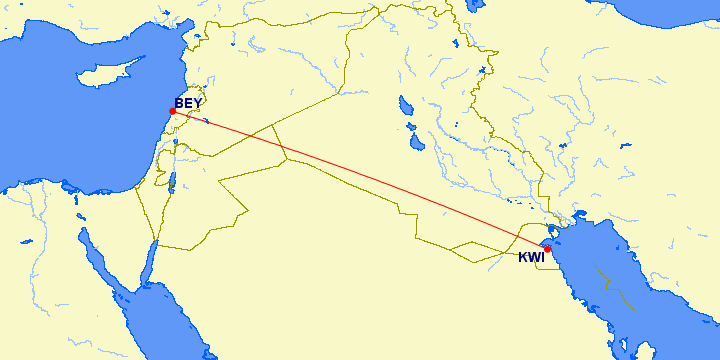 A340-300: 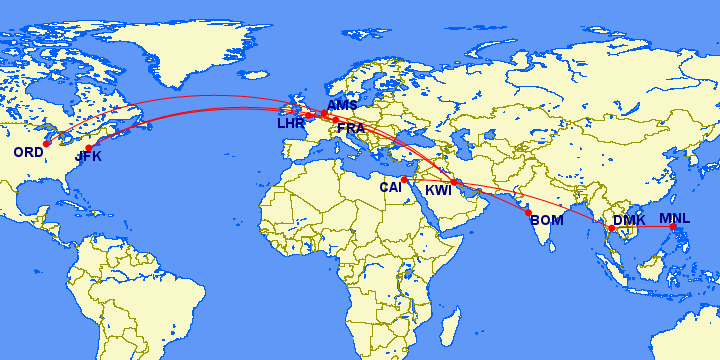 777-200: 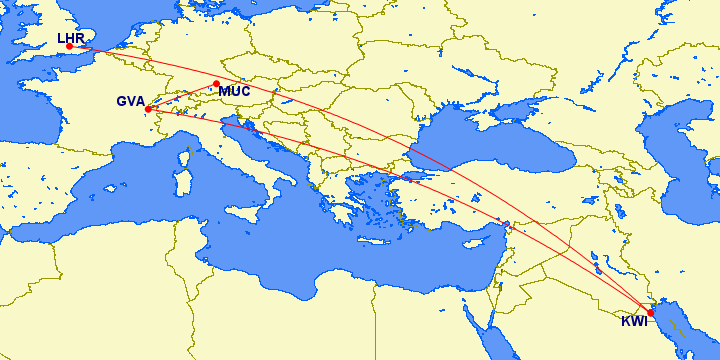 A300-600R: 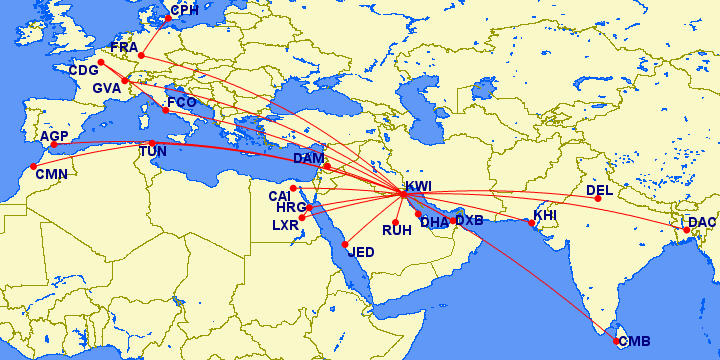 A310-300:  A320: 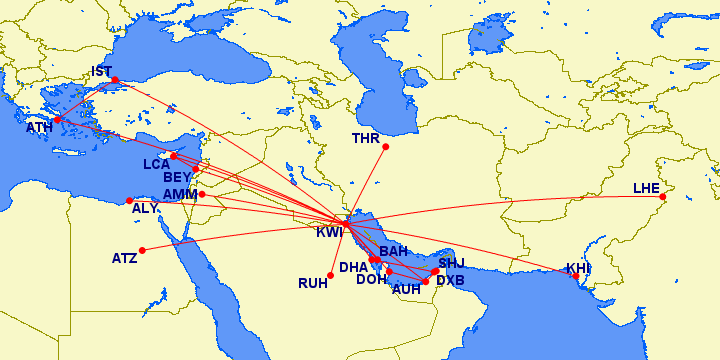 707-300C Cargo operated by Trans Meridian Airlines - TMA: 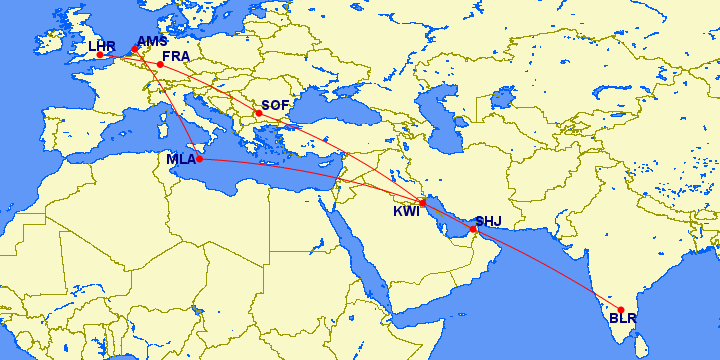 DC-8-62H Cargo operated by Air Transport International - ATN: 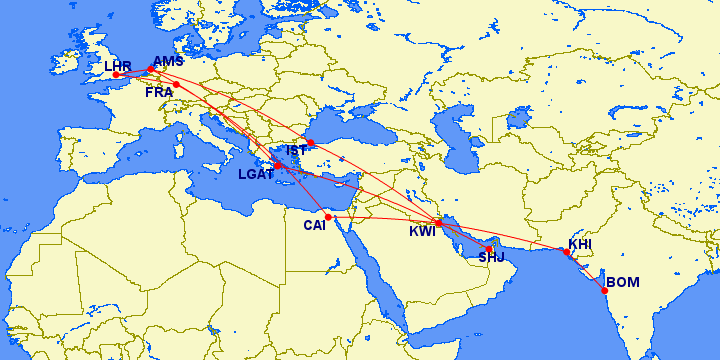 Download Kuwait Airways 1998 v2 Flightplans Here Download Kuwait Airways 1998 v2 Flightplans Here |
|
|
|
Post by chasensfo on Dec 26, 2022 11:06:43 GMT -5
\\State of Kuwait 1998 v2 (26DEC22; Added 747-400 from Kuwait Airways flightplans, changed cruise speeds to AIG standard) State of Kuwait (1993 - Present) IATA: NONE ICAO: KAC (but use "VIP" instead for parking or the planes will use passenger gates) CALLSIGN: KUWAITI The State of Kuwait is the official VIP government transport agency for the country of Kuwait. In 1993, this division was formed with a Boeing 727-200 in a VIP configuration in a one-off livery similar to the colors adopted by Kuwait Airways in 1996 along with a yellow "Don't forget our POWs" sticker reminding the public about the Kuwait Airways staff and passengers detained, and in some cases killed, during the Gulf War. A 747-400, operated by Kuwait Airways on behalf of the State of Kuwait was added in 1994 and used for most long-haul state visits. In 1996, 2 VIP-configured aircraft operated by Kuwait Airways were added to the fleet; an A310-300 and an MD-83. Into the 2000s and 2010s, the State of Kuwait began adding its own aircraft instead of transferring aircraft over from Kuwait Airways. These included A320s, Gulfstreams, 737NG BBJs, and even an A350-500. The 747-400 flew on into the late 2010s alongside the other aircraft, occasionally being used for regularly scheduled Kuwait Airways flights. Today, the State of Kuwait still operated the A350-500 alongside other aircraft like a Gulfstream GVI, a BBJ3 (737-900), and an A320. All flights are based on actual VIP trips flown in the late 1990s, with flights included to all recurring destinations which most often saw the aircraft along with some one-time visits. While the destinations are real, the flight numbers and times are representative but based on photo data where possible for roughly accurate departure or arrival times. The A310 makes visits to IAD, LHR, and FAO while the MD-83 takes trips around the Middle East and makes a 3-day trip to Switzerland. Assign these aircraft "atc_parking_types=RAMP;"atc_parking_codes=VIP" to ensure they park in the right place, as they did not normally park at the passenger terminal. All repaints except for the MD-83 are completed. The 727-200, which was active in 1998 but as part of the regular Kuwait Airways fleet, may be used as a stand-in for the MD-83 for now. The following repaints are available: FAIB 747-400 by Micheal Pearson: mpai4fs.com/2021/12/03/state-of-kuwait-747-400/AIA 727-200 by Michael Pearson (use in place of MD-83): mpai4fs.com/2021/12/03/kuwait-airways-727-200/TFS A310-300 (FS9 Native): library.avsim.net/search.php?SearchTerm=ai310kac.zip&CatID=root&Go=Search747-400 VIP Charters: 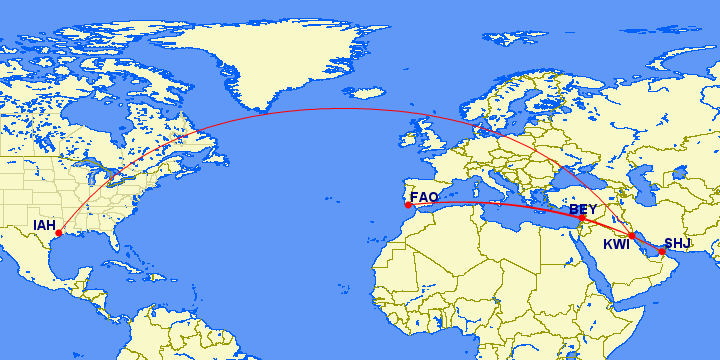 A310-300 VIP Charters: 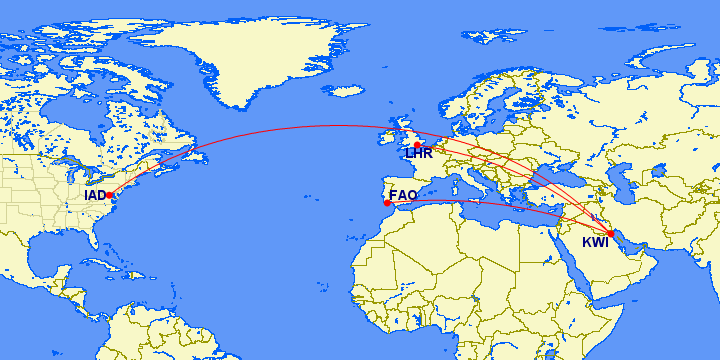 MD-83 VIP Charters: 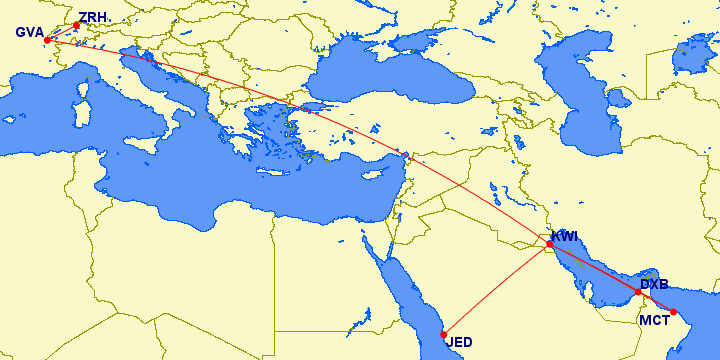 Download State of Kuwait 1998 v2 Flightplans Here Download State of Kuwait 1998 v2 Flightplans Here |
|
|
|
Post by chasensfo on Dec 26, 2022 11:19:55 GMT -5
Didn't do much of a history for this one yet, that'll come later probably when they go up on my site. \\Aer Lingus 1998 v3 (26DEC22; added fleet variations by Micheal Pearson, found evidence of 1 more old colors 737-500) Aer Lingus (1936 - Present) IATA: EI ICAO: EIN CALLSIGN: SHAMROCK Aer Lingus is the national airline of Ireland which is based in Dublin(DUB) and is one of the largest carriers in Western Europe. Due to economic issues and moments of civil unrest, Aer Lingus did not quite grow to the global status of the UK carriers but did offer transatlantic services to the USA from the dawn of the jet age onwards. In 1998, Aer Lingus was serving much of Western Europe as well as several cities in the US, with transatlantic flights based from DUB and SNN with A330-300s and an MD-11 leased from World Airways in the full Aer Lingus livery. The MD-11 did an SNN-JFK route that routed through Belfast(BFS) 4 days per week. Shorthaul flights were mostly based from DUB, SNN, and ORK, but some routes were flown between secondary cities in Ireland and airports in the UK. Most routes were operated daily or at least on weekdays, but some routes out of SNN and ORK as well as flights to JER were once weekly. All Aer Lingus Commuter aircraft, which included the Fokker 50 and Bae-146-200\300 were operated and fully owned by mainline Aer Lingus along with 737-300\500s and brand new A321s. While A321s were quickly joining the fleet, they were only scheduled on the ORK-LHR route and spent most of their time flying random services for training purposes and sitting around the hubs. While many routes were scheduled to a specific type of aircraft, equipment types were listed as varied on many flights as well, operated by 737s or A321s. Most fleet types were fully painted in the new color scheme which was introduced in 1996, but a Fokker 50, A330, and a few 737-500s still wore the old colors. The Saab 340s were gone, along with an L-1011 which had just been returned to Caledonian Airways in a hybrid Aer Lingus livery (replaced by the World Airways MD-11 lease). The first A330-200 came in May of 1999 and was used to launch LAX service. If anyone can find the schedule for that flight, I will add that aircraft flying this route. All repaints are completed: FSPX MD-11\A330-300 + FAIB A321\737-400\500 + FMAI BAe-146-200\300 + NAAI Fokker 50 fleet by Micheal Pearson: mpai4fs.com/category/repaints/airlines/aer-lingus/TFS A330-300\FAIB 737-500\NAAI Fokker 50 Old Colors by Ranmori Scythe: ranmori.mixh.jp/wp/blog/2019/04/21/aer-lingus-1994-october-fleet/FSPX MD-11 (Part of large package; FSX Native): library.avsim.net/search.php?SearchTerm=fspxai_md-11_woa_leases.zip&CatID=root&Go=SearchTFS A330-300 new colors (FS9 Native): library.avsim.net/search.php?SearchTerm=aerlingusa333.zip&CatID=root&Go=SearchTFS A330-300 old colors (FS9 Native): library.avsim.net/search.php?SearchTerm=aer_lingus_airbus_a330-300.zip&CatID=root&Go=SearchDJC A321 (FS9 Native): library.avsim.net/search.php?SearchTerm=aerlingusa321.zip&CatID=root&Go=SearchAIA 737-500v2 (FS9 Native): library.avsim.net/search.php?SearchTerm=aer_lingus_boeing_737-500.zip&CatID=root&Go=SearchFMAI BAe-146-200 (paint over .com logo; FS9 native): library.avsim.net/search.php?SearchTerm=ai_b462_ein.zip&CatID=root&Go=SearchFokker 50: 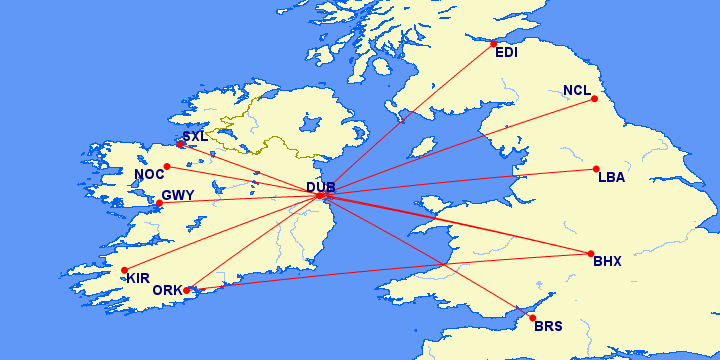 Bae-146: 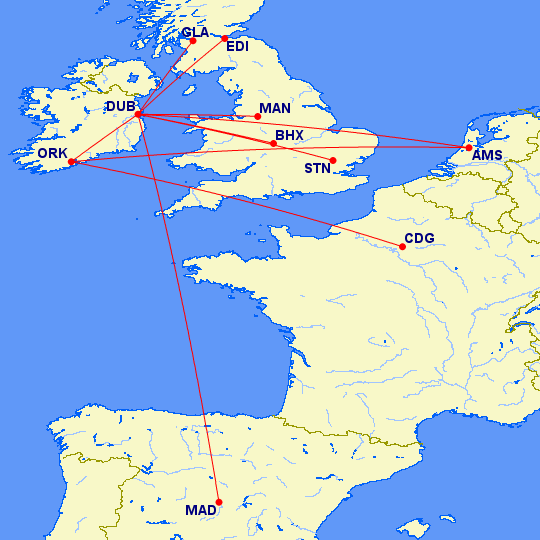 737-400\500 and A321: 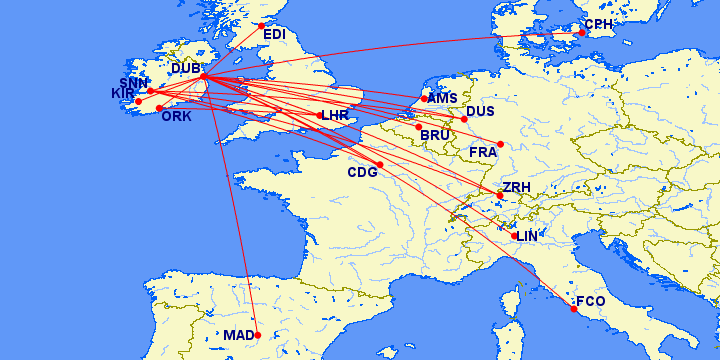 A330-300:  MD-11 operated by World Airways: 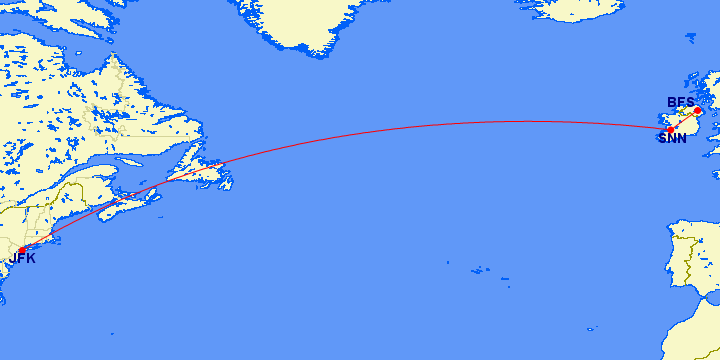 Download Aer Lingus 1998 v3 Flightplans Here Download Aer Lingus 1998 v3 Flightplans Here |
|
|
|
Post by chasensfo on Dec 26, 2022 11:44:28 GMT -5
\\LOT Polish Airlines 1998 v2 (26DEC22; Added fleet variations by Micheal Pearson, added a 767 delivered in the late 1990s, changed aircraft order for better AI parking, changed cruise speeds to AIG standard) LOT Polish Airlines (1929 - Present) IATA: LO ICAO: LOT CALLSIGN: LOT ***Use "atc_parking_codes=LOTX" as well for these carriers*** LOT operated by EUROLOT (1996-2015) IATA: K2 ICAO: ELO CALLSIGN: EUROLOT EUROLOT operated by Tasawi Air Services (1998-1999) IATA: 9X ICAO: TWI CALLSIGN: TASAWI LOT Polish Airlines is the national airline of Poland, based in Warsaw. LOT was founded in 1928 and began flying in 1929, making it one of the oldest airlines in the world still operating today. Prior to WWII, LOT operated modern Western aircraft on services around Europe like the Electra 10, DC-2, and Ju-52. During WWII, Poland was decimated by Germany, and LOT all but suspended operations for the duration of the war. Afterward, Poland was located in the Eastern half of the "Iron Curtain" during the Cold War, and operated with Russian and Ukrainian equipment through the next several decades and well into the 1990s. But by the late 1990s, the vast majority of these aircraft had been replaced by modern Western planes like the 737 and 767. While in modern times LOT's fleet of 787s serves a wide range of international destinations, in 1998 LOT had just a few 767s serving destinations in Asia and the USA. 2 767-200s and 3 767-300s did the long haul flying while 737-300s, 737-400s, 737-500s, and ATR-72s comprised the rest of the mainline fleet. In addition to these aircraft, ATR-42s from recently-started EUROLOT were operated on behalf of LOT alongside 2 Jetstream 31s from Tasawi Air Services. The 2 737-300s were leased out to Olympic Airlines at the time of the September 1998 schedule used for these flight plans in a cool hybrid livery, so I elected to exclude them and instead assigned 2 extra 737s to a 737-300 leased from Air New Zealand in a hybrid livery for summer charter work and the first ERJ-145, both of which were active in summer 1999. Charter flights between Polish cities and PMI have been included, as flown in the 1999 season. If you wish, simply assign these planes to LOT 737-500\400s(the -300s were not in the fleet in the standard colors yet) or exclude them. Though a large airline, LOT primarily focused on Eastern Europe and did not do much flying to most of the traditional large European hubs yet in 1998. LOT would continue to grow into a large member of the Star Alliance, today flying to LAX on the US West Coast and still serving Asia. LOT Polish Airlines is the national airline of Poland. Poland was located in the Eastern half of the "Iron Curtain" during the cold war, and had operated with Russian and Ukrainian equipment through much of the 1990s, but had retired all of those aircraft by 1998. While in modern times LOT's fleet of 787s serves a wide range of international destinations, in 1998 LOT had just a few 767s serving destinations in Asia and the USA. 2 767-200s and 3 767-300s did the long-haul flying while 737-300s, 737-400s, 737-500s, and ATR-72s comprised the rest of the mainline fleet. In addition to these aircraft, ATR-42s from recently-started EUROLOT were operated on behalf of LOT alongside 2 Jetstream 31s from Tasawi Air Services. The 2 737-300s were leased out to Olympic Airlines at the time of the September 1998 schedule used for these flight plans in a cool hybrid livery, so I elected to exclude them and instead assigned 2 extra 737s to a 737-300 leased from Air New Zealand in a hybrid livery for summer charter work and the first ERJ-145, both of which were active in summer 1999. Charter flights between Polish cities and PMI have been included, as flown in the 1999 season. If you wish, simply assign these planes to LOT 737-300s or exclude them. Though a large airline, LOT primarily focused on Eastern Europe and did not do much flying to most of the traditional large European hubs. One extra ATR-72 was needed and it is segregated in case you wish to exclude it. The leased 737-300 was used for holiday charters to Palma de Mallorca (PMI), charter destinations are real based on photo evidence and an article about the lease. Flight times and numbers are representative. The ERJ-145 was active at the time but not listed in the schedule. It turns out the sole 1st aircraft was operating regular 737 services in real life for training and familiarization purposes. The ERJ schedule is made up of some 737 flights didn't didn't fit well. Some aircraft have very low utilization times. Flightplans by Vireak Ball and myself. All repaints are completed: FAIB 767-300: library.avsim.net/search.php?SearchTerm=faib_767-300_lot.zip&CatID=root&Go=SearchFAIB 767-200: library.avsim.net/search.php?SearchTerm=faib_767-200_lot.zip&CatID=root&Go=SearchFAIB 737-500: library.avsim.net/search.php?SearchTerm=faib_737-500_lot.zip&CatID=root&Go=SearchFAIB 737-400: library.avsim.net/search.php?SearchTerm=faib_737-400_lot.zip&CatID=root&Go=SearchFAIB 737-300 (Includes Air New Zealand hybrid): library.avsim.net/search.php?SearchTerm=faib_737-300_lot.zip&CatID=root&Go=SearchAIM ERJ-145 (FS9 Native): www.flightsim.com/vbfs/fslib.php?do=copyright&fid=166613OSP ATR-72-202: library.avsim.net/search.php?SearchTerm=osp_atr-72-200_lot.zip&CatID=root&Go=SearchOSP ATR-42-500 EUROLOT (use in place of -300; FS9 Native): library.avsim.net/search.php?SearchTerm=atr45_eurolot.zip&CatID=root&Go=SearchPAI Jetstream 31 Tasawi Air Services fleet by RetroAI member ludo66x: drive.google.com/drive/folders/1ArVoP2fVn2RLH8gsNj7AvjTQPodMqmtf767-300:  767-200:  737-500: 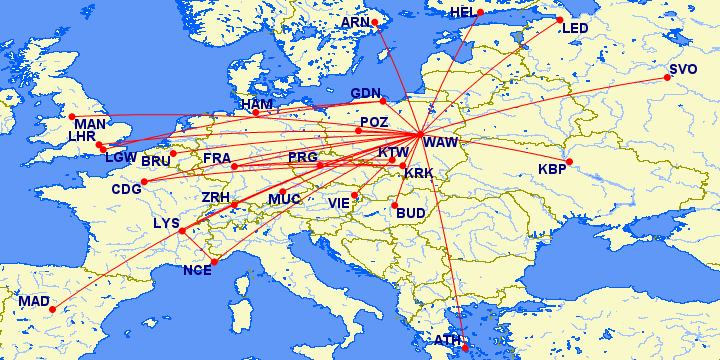 737-400:  737-300 charters: 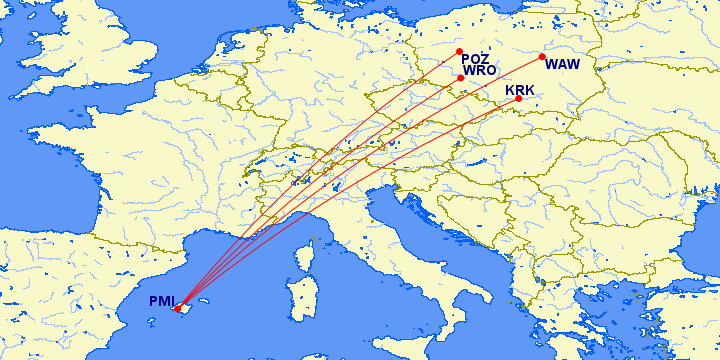 ATR72: 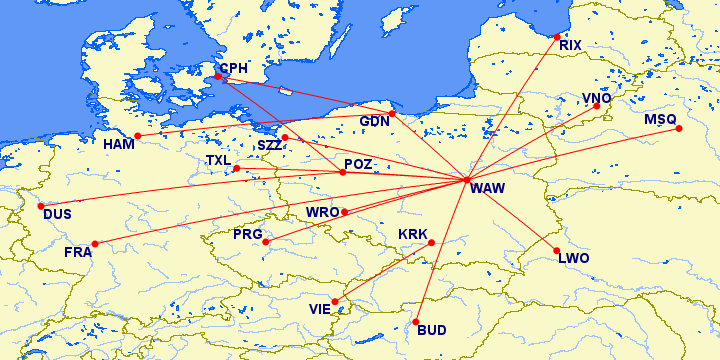 ATR42 operated by Eurolot: 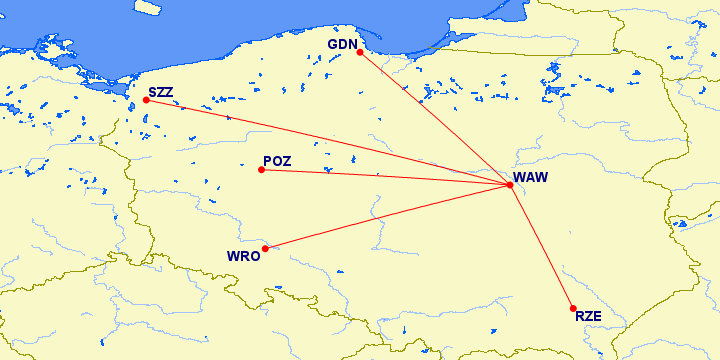 Jetstream 31 operated by Tasawi Air Services: 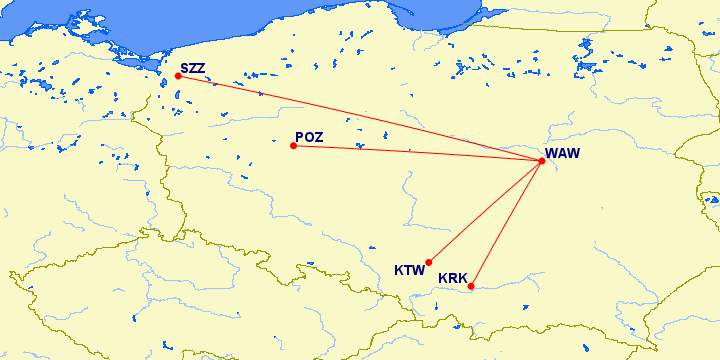 Download LOT Polish Airlines 1998 v2 Flightplans Here Download LOT Polish Airlines 1998 v2 Flightplans Here |
|
|
|
Post by chasensfo on Dec 26, 2022 11:56:56 GMT -5
\\Japanese Government 1998 v3 (26DEC22; added lots of variations for the new repaints by RAI member ludo66x, changed aircraft order for better AI parking, changed cruise speeds to AIG standard, renumbered aircraft for easy install of future variations) Japanese Self Defense Force (JSDF) VIP IATA: NONE LISTED ICAO: JSDF (use VIP for parking) CALLSIGN: CYGNUS (or JAPAN AIR FORCE when Prime Minister is aboard) Maritime Safety Agency IATA: NONE LISTED ICAO: MSA CALLSIGN: JAPAN COAST GUARD (Simply the tail number was also often used, change this if you wish) JCAB Flight Inspection IATA: NONE LISTED ICAO: JCAB CALLSIGN: CHECK STAR The JSDF was using a pair of 747-400s for VIP transport of the Prime Minister and other dignitaries in 1998, as it had been for some time. The aircraft were based in Chitose(CTS) when they were not flying in a transport role, and often flew training flights in that area, which are simulated. VIP flights were based in Tokyo-Haneda(HND), and the aircraft most often traveled together when the Prime Minister would visit foreign nations. In 1998, the Japanese Emperor and his wife(who rarely used the 747s or any government aircraft) took a trip to the United Kingdom and Denmark, and this is simulated in these flightplans with real routing and approximate ground times. As only 1 flight to Hong Kong(VHHX) in these flightplans actually carried the Prime Minister, which is a rare trip with just 1 747 used, the "CYGNUS" callsign is appropriate on all but this flight, as that callsign was used whenever the Prime Minister was not on board (which was most flights the 747s made historically). The 747s were retired in 2019 in favor of 2 brand new 777-300ERs, and they currently sit stored in the US desert awaiting their fate. Ranmori Scythe has painted the FAIB 747-400s here: drive.google.com/drive/folders/1RAURo1eTqzIprjXwB3tuCXKBE_ZAQeRV?usp=sharing747-400:  Japan's Coast Guard is known as the Maritime Safety Agency, and the aircraft fly in a variety of roles from a total of 14 bases nationwide. Of these bases, HND is the largest and where the bigger aircraft are most frequently spotted. I have simulated these aircraft flying in training and transport roles, as they usually do in real life. The Maritime Safety Agency operated a large fleet of various helicopters in 1998, but I have excluded these aircraft. Included are several YS-11As and B200 King Airs, as well as 2 Saab 340s and Falcon 900s. The aircraft mostly fly between airports that commonly were visited by Maritime Safety Agency aircraft. The King Airs, Saab 340s and the Falcon 900s are still needed, the following repaints are available: FSP YS-11A fleet by RetroAI member ludo66x: drive.google.com/drive/folders/1SpMJOGUYAc6B4vIiMxeXUC6LeL9MYnN3B200 Kingair: 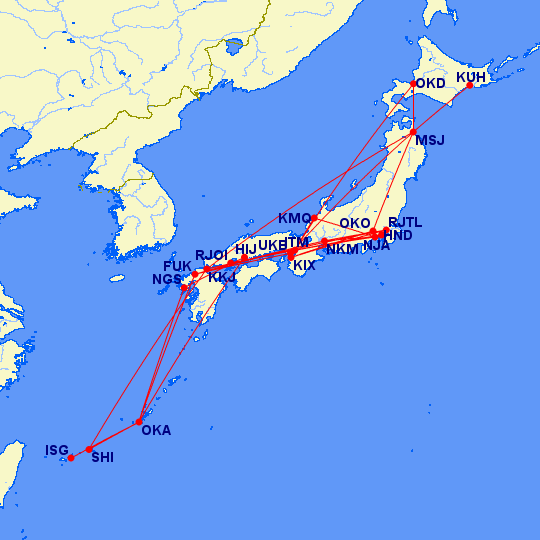 YS-11A: 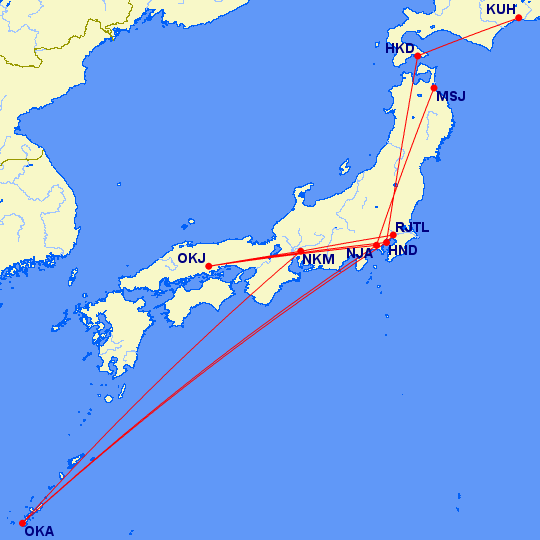 Falcon 900:  Saab 340: 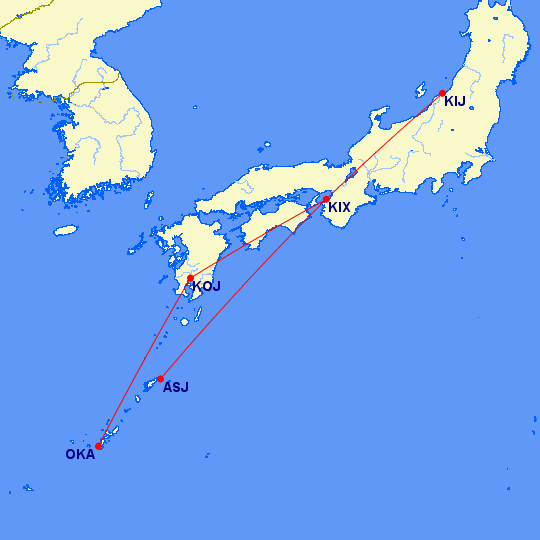 JCAB Flight Inspection is Japan's Civil Aviation authority which is responsible for calibrating the instrument landing systems and updating approaches into the various airports as needed, the role played by the FAA's "Flight Check" in the United States. The aircraft show up at airports and get in the way of traffic by performing touch-and-go landings or missed approaches for about an hour or so, then land and return to their HND base soon afterward, or fly on to the next airport in some cases. The flights are mostly done on weekdays, and most of the fleet is parked together on the JCAB ramp in HND on the weekend. Most of the fleet was made up of YS-11s in 1998, but there were 2 brand new Saab 2000s that had recently arrived and a Gulfstream GII and GIV as well. All repaints are completed: FSP YS-11A fleet by RetroAI member ludo66x: drive.google.com/drive/folders/1DORAycg6PWVmsaTr9ThAHnBSMJ3KhkssGulfstream II by RetroAI member ludo66x: drive.google.com/drive/folders/1mOLzIxqnakAMmzOhflQQkIRShY6l-tAWGulfstream IV by RetroAI member ludo66x: drive.google.com/drive/folders/1yIr3EhvbBGCYTJtMhLAcEDmDVii0bhIATFS Saab 2000 (FS9 Native): library.avsim.net/search.php?SearchTerm=jcab_turboprops_279018.zip&CatID=root&Go=SearchYS-11:  Saab 2000: 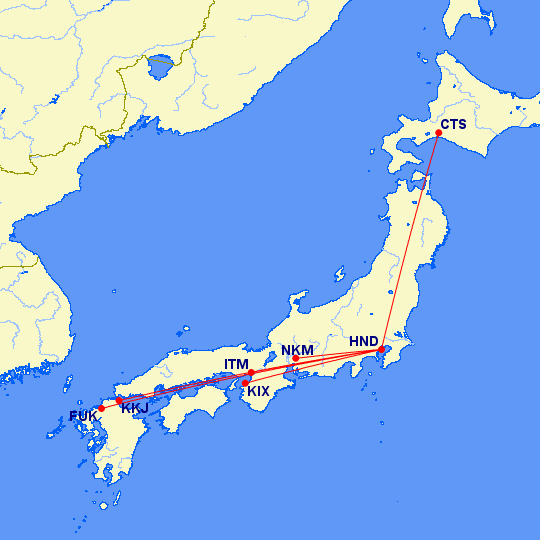 Gulfstream GII: 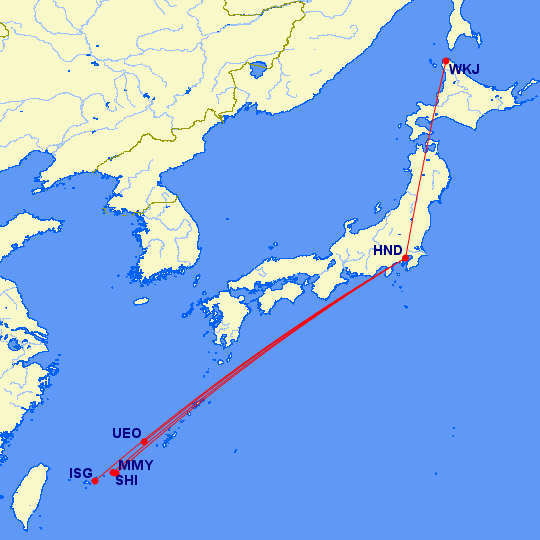 Gulfstream GIV: 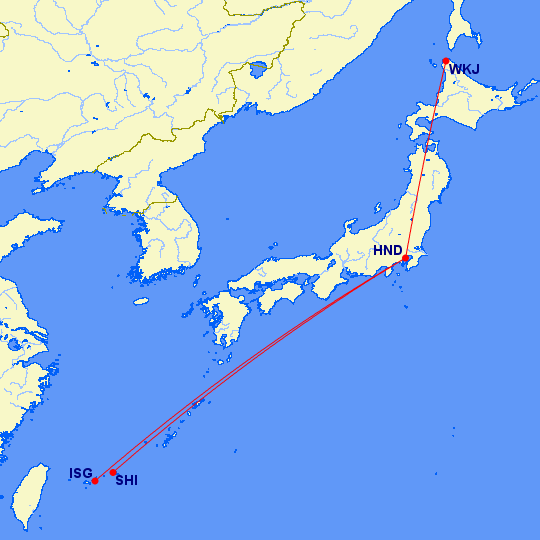 Japanese Government 1998 Version 3 Flightplans Here Japanese Government 1998 Version 3 Flightplans Here |
|
|
|
Post by chasensfo on Dec 26, 2022 12:19:23 GMT -5
//Formosa Airlines 1998 v2 (26DEC22; re-organized aircraft list for better AI parking, changed cruise speed to AIG standard) Formosa Airlines 1998 (1966-1999) IATA: VY ICAO: FOS CALLSIGN: FORMOSA Formosa Airlines was founded in 1966 as Yung Shing Airlines, which was initially a charter operator and air taxi flying twin-engine props. Eventually, Do-228s were added and the airline began passenger flights. In 1987, the carrier went "all in" to scheduled flying and moved its headquarters to Taipei's domestic airport(TSA), bought Saab 340s, and changed its name to Formosa Airlines. To survive in a market like Taiwan with intense competition and a limited number of commercial airports, Formosa filled in the gaps left by all the MD-80/90 and Airbus operators on the domestic Taiwanese flights, flying turboprops and smaller jets to the smaller cities going head to head with the DHC-8s used by competitors. However, on the busy routes, the Fokker 100s allowed Formosa to compete with larger carriers. Formosa adds a lot of variety to 1998 TSA and KHH operating the Fokker 50, Fokker 100, Saab 340B, and the Do-228s from the Ying Shing days. Despite the varied fleet, most aircraft flew only a few routes with high-density service using several aircraft in a short period of time. Like most other Taiwanese airlines, Formosa was plagued with a terrible safety record for an airline its size, having lost 5 aircraft since the start of scheduled passenger operations in 1983. This was a sizable number of aircraft lost for a carrier the size of Formosa! As such, in 1998, when a Formosa Saab 340 took off illegally with several key systems inoperative and was lost with all on board just after take off, the Taiwanese aviation authority stepped in and grounded the airline for bout 3 weeks. During this time, the airline addressed enough of its internal issues to be allowed to resume service. While this may paint a bad picture, Formosa had started code-sharing with China Airlines on some SF340 routes and a string of accidents did not seem to phase China Airlines, which itself was having similar issues at the time. By 1999, China Airlines took back the wide-body fleet of Mandarin and ended Mandarin's long-haul flying, instead deploying Formosa aircraft on domestic flights under the Mandarin banner, ending the life of Formosa. Mandarin Airlines is active in Taiwan today, still in a regional role, and hasn't had a fatal accident since Formosa began operating the flights. Meaning that their bold decision to become a major airline and fly "big" planes on a few niche routes actually worked, as did the changes to their safety culture. All repaints are completed: AIA Fokker 100 (FS9 Native): library.avsim.net/search.php?SearchTerm=aif100fac.zip&CatID=root&Go=SearchNAAI Fokker 50 by RetroAI member ludo66x: drive.google.com/drive/folders/1sn9-6VC7x2-86g7ydLaQR_0KL5D8RitpTFS Saab 340 (FS9 Native): library.avsim.net/search.php?SearchTerm=aisf3fos.zip&CatID=root&Go=SearchFMAI Do-228 by RetroAI user Alex/Funk (FS9 Native): app.box.com/v/7funk/file/41482094354Fokker 100: 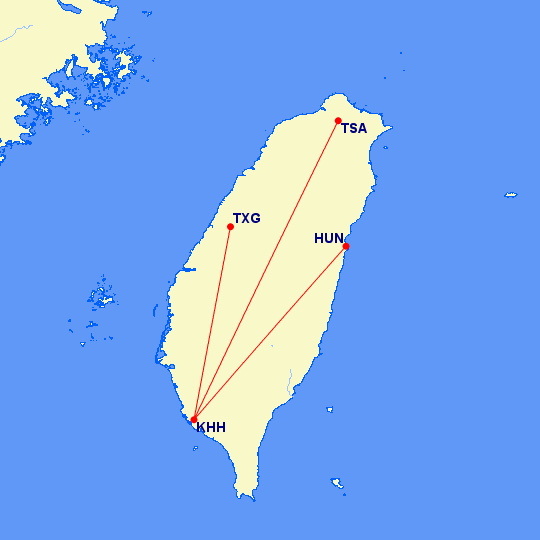 Fokker 50:  Saab 340B:  Do-228: 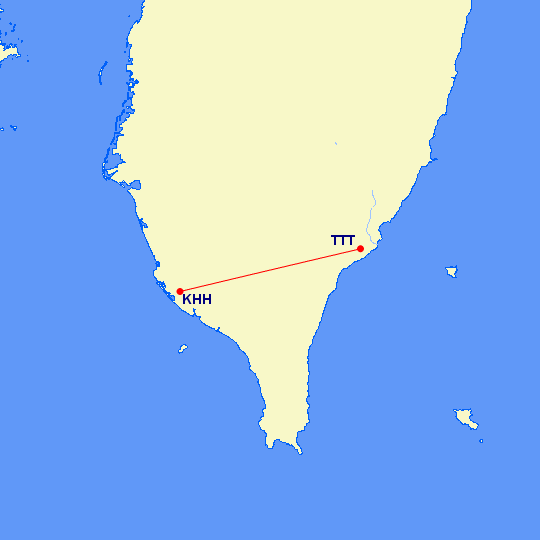 Formosa Airlines 1998 v2 Flightplans here Formosa Airlines 1998 v2 Flightplans here |
|
|
|
Post by chasensfo on Dec 26, 2022 12:30:25 GMT -5
\\Eurowings 1998 v2 (26DEC22; added variations by RetroAI memeber ludo66x, renumbered aircraft for easier installation of any future variations) Eurowings (1994 - Present) IATA: EW ICAO: EWG CALLSIGN: EUROWINGS Eurowings is a German low-cost carrier based in Dusseldorf (DUS) and a partner of Lufthansa. Eurowings was founded as a German commuter carrier in 1993 from the merger of regional carriers Nürnberger Flugdienst (NFD), based in Nuremberg (NUE), and Regionalflug (RFG), based in Dortmund (DTM), which both were ATR operators. Newly formed Eurowings launched flights in 1994 from a DTM base with ATR42 and ATR72 turboprops. BAe-146s joined the fleet soon after, and the route network expanded across Central and Western Europe, with charters to the Mediterranean. The airline was successful and quickly added aircraft, soon having over 30 planes in the fleet, making it one of the largest carriers in Germany. For a short time in the mid-1990s, a Hapag Lloyd A310 was operated on behalf of Eurowings on leisure charters, possibly in Eurowings markings, but the operation was so short-lived that I have not found any photos of it. In 1997, both Air France and KLM respectively began aggressively signing regional carriers to feed their Paris (CDG) and Amsterdam (AMS) hubs beyond the scope of what their current commuter partners could handle. Eurowings signed a contract to operate some BAe-146s on behalf of Air France from CDG, in full Air France colors with Eurowings titles, and another contract with KLM to provide ATR flights from AMS to all over Germany, with these aircraft retaining the Eurowings livery. The KLM operation was very big, and Eurowings rivaled KLM Cityhopper in daily departures from AMS by the end of the 1990s. In 1998, Eurowings decided to go for a major expansion of its own branded flights by adding the first of several Airbus A319s to the fleet. Those aircraft were initially deployed on a scheduled Stuttgart (STR) to AMS route in cooperation with KLM, who reduced service to STR in return, but primarily the airplanes were first used for a wide range of summer holiday charters. Other aircraft in the fleet also operated charters, both of the usual European holiday spots as well as Jersey (JER) in the UK and destinations in other parts of Europe like Italy and Ireland. AMS is the best place to spot Eurowings aircraft in 1998 given the number of routes and departures, but they were a common sight around most large and medium-sized German airports at the time as well, with several focus cities established in the country. All flights operating on behalf of KLM are included in these flight plans as Eurowings aircraft were not solely dedicated to KLM, but the Air France flights may be found in the Air France flight plans. A lone Do328 was operated in 1998 from AMS, but it was not included in this schedule. The Do328 went to a new carrier called "Tempelhof Express" as that carrier's lone aircraft, and will instead be included in those flight plans. In 2001, Eurowings began operating as a Lufthansa Regional partner, and for the next decade, this became the primary focus of the airline. Various aircraft were added to the fleet, including the A320, CRJ, and Dash 8 and the carrier acquired ownership of rival carrier Germanwings. Eurowings became part of the Lufthansa Group and gained resources including the transfer of aircraft from Lufthansa as needed. In 2010, the airline closed its headquarters and facilities in DTM and relocated to DUS to better serve Lufthansa's interests. In 2013, Lufthansa began to reassign Eurowings-operated flights to Germanwings and ultimately terminated Eurowings Lufthansa Regional status in 2014. Eurowings was rebranded as a low-cost carrier and began operating flights across Europe, while later adding A330 and A340 heavy jets for long-haul flights to destinations in the United States such as Ft. Myers (RSW) and Las Vegas (LAS). The long-haul operation was successful and expanded into the late 2010s. Sadly, due to the COVID-19 pandemic, all of Eurowing's long-haul flights were suspended in 2020 and then terminated in 2021. Lufthansa has since announced that Eurowing's long haul will relaunch in the future and rebranded as "Eurowings Discover". Flightplans by eth72s. All repaints are completed: FAIB A319 by RetroAI member @ludox66: drive.google.com/drive/folders/1CleZ1L6YL_Ed-sfHCXM-xOqinSBBXFgsFMAI BAe-146-300 (FS9 Native): library.avsim.net/search.php?SearchTerm=fmai_b463_ewg.zip&CatID=root&Go=SearchFMAI BAe-146-200 (FS9 Native): library.avsim.net/search.php?SearchTerm=fmai_b462_ewg.zip&CatID=root&Go=SearchOSP ATR72-202\212 (FS9 Native): library.avsim.net/search.php?SearchTerm=ewg_atr_72_fleet.zip&CatID=root&Go=SearchOSP ATR42-500 by RetroAI member @ludox66: drive.google.com/drive/folders/1MA-vlSmITUiJ6qc_eQ_O7U4ZD9O1gUEYOSP ATR42-300QC by RetroAI member @ludox66: drive.google.com/drive/folders/1FDHQE0zErxyQjvihPOGCxFQDJBaKQa5mA319: 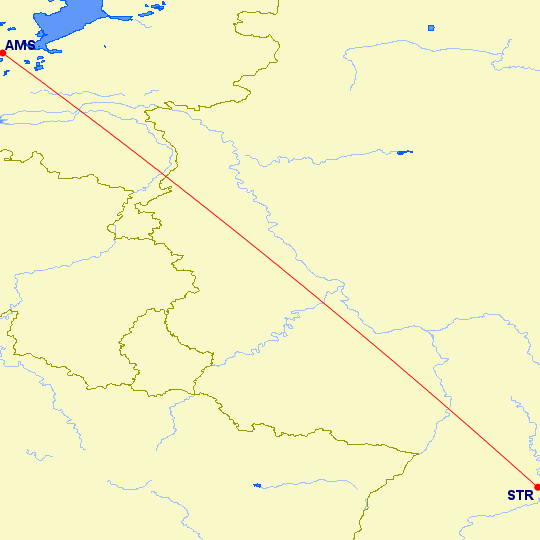 BAe-146-300\200: 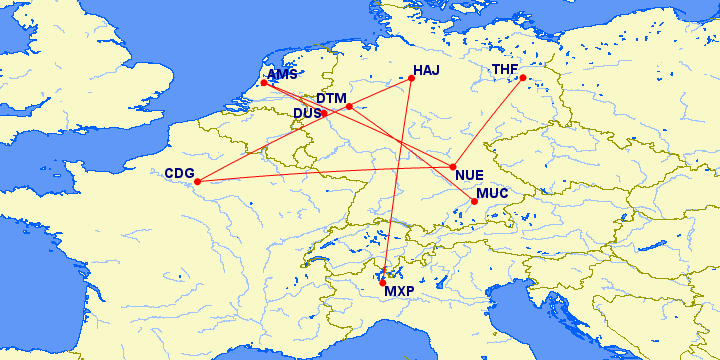 ATR72\42: 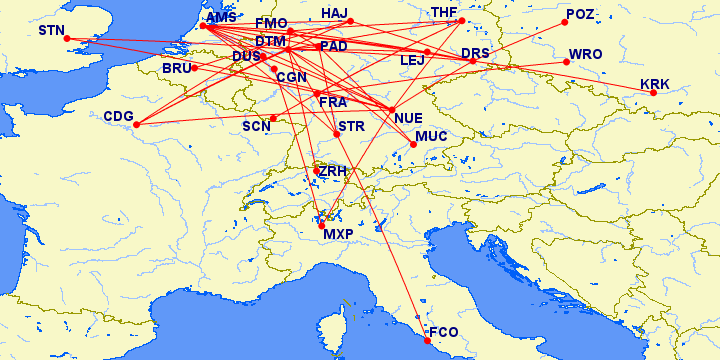 Seasonal Charters: 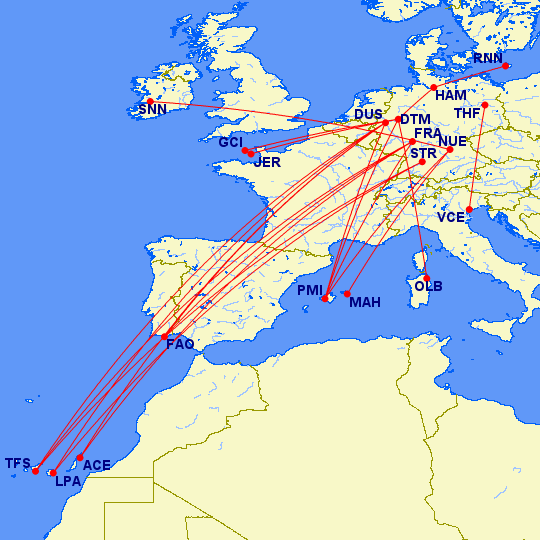 Download Eurowings 1998 v2 Flightplans Here Download Eurowings 1998 v2 Flightplans Here |
|
|
|
Post by chasensfo on Dec 26, 2022 12:46:04 GMT -5
//Jersey European Airways - JEA 1998 v2 (26DEC22; added variations for repaints by RAI member ludo66x, changed aircraft order for better AI parking, added missing BAe-146 and 2 DHC-8-300s not in the JP Fleets book, changed cruise speed to AIG standard) Jersey European Airways - JEA (1979-2020) IATA: JY ICAO: JEA CALLSIGN: JERSEY Jersey European Airways (JEA) was an English regional airline, based in Exter (EXT). The airline was established in 1979 from the merger of Jersey (JER)-based Intra Airways, founded in 1969, and Bournemouth (BOH)-based Express Air Services, which operated a passenger division for a few years before deciding to focus on cargo in 1979, becoming Channel Express. Initially, the airline flew Vickers Viscounts, primarily across Southern England. Through the 1980s, the network was expanded to include several larger and medium-sized cities to the North. 3 DHC-6s were added soon after but only served the airline for a few years. Other aircraft such as the Shorts SD3-30, Shorts SD3-60, HS748, and Fokker 27 joined the fleet. During the week, regularly scheduled airline services were operated. On weekends, the airline operated numerous routes to JER and nearby Guernsey (GCI) as well as Blackpool (BLK), very popular holiday destinations for the English, as well as cargo flights. Fokker 27s became the mainstay of the fleet, with 2 operated in cargo configurations, and routes were added to several points in Ireland including a new hub in Belfast City (BHD), a secondary airport near the main Belfast International Airport (BFS). All aircraft were operated in a full-economy class configuration, as was common with commuter airlines. By the 1990s, the airline had introduced a new modern white livery with yellow and red graphics near the forward fuselage. The fleet was quickly repainted, and all aircraft soon wore this livery. By the mid-1990s, a fleet of BAe-146s was being built up, including the -100, -200, and -300 variants. These aircraft were used mostly on routes to larger airports, like to BFS and the London area airports. JEA was now serving all the London Area Airports except for London City (LCY) and London Heathrow (LHR). This changed in 1997 when the airline signed a deal to have a few aircraft operate on behalf of Air France in their full livery. These BAe-146s were based in Paris (CDG) and served both domestic routes and services from secondary cities like Toulouse (TLS) and Lyon (LYS) to LHR, Birmingham (BHX), and other English airports. This operation would eventually expand with services to several other countries including the Nordic region. By 1998, most of the Shorts SD3-60s and all of the Shorts SD3-30s had left the fleet. Only a few Shorts SD3-60s remained, operated with 36 seats. One of these aircraft was leased in October from a British Airways commuter carrier and operated in full British Airways colors with the titles painted over almost exclusively on a new BHD to Cork (ORK) route. The aircraft did visit other cities on weekends. Most of the prop fleet were Fokker 27-500s, operated with 48 seats, 2 of which were in an all-cargo configuration and were leased out to BAC Express Airlines and Channel Express at the time. The same year, JEA wet-leased a 104-seat Bac 1-11-500 from European Air Charter Services and put it in use mostly on routes from London. This aircraft was gone by 1999 and scrapped in 2001. In addition to the BAe-146s in full Air France colors, aircraft in the JEA livery covered those flights as needed. While JER and GCI both had daily flights to the London area airports and others, on the weekends those airports became busy hubs for JEA, especially on Saturdays. Most routes from GCI and JER operated on weekends only. In 1999, the airline received its first DHC-8-300 modern turboprops. The carrier also began a franchise agreement with British Airways, operating one of its 2 BAe-146-300s in an albino livery with British Airways titles on a route between London Gatwick (LGW) and Inverness (INV). As the airline expanded, the name was changed in 2000 to "British European" to better reflect the scope of its network. In 2002, this name was shortened to "FlyBe". The airline built up a large network and fleets of modern Q400s and Embraer jets and expanded across the region. The airline even finally began to grow in London City (LCY). The airline became intertwined with Virgin Atlantic and began opening codeshares, but by 2019, Flybe was in trouble and needed help from Virgin's parent company to keep flying. The 2020 COVID-19 pandemic was too much for the carrier to weather in its weakened state, and FlyBe closed its doors in 2020. As the JEA planes sometimes flew part-time in the Air France network, I ended up with some extra plans and had to re-use some of the registrations from planes in the Air France livery. They will very rarely overlap in the sim in the same areas. All Air France flights are included in the Air France 1998 flight plans. The 1999 British Airways flights are included, as is a DHC-8-300 which is made up of an extra Fokker 27. Some repaints are still needed, namely the special liveries and the British Airways liveries, but the majority are available: FMAI BAe-146-300 fleet by RetroAI member ludo66x: drive.google.com/drive/folders/1kqt_FLsbCYxFfbVAzISUFdPUGOIwlnrnFMAI BAe-146-100 fleet by RetroAI member ludo66x: drive.google.com/drive/folders/1HEc-OEpNS2upL3sgDYGUXqeUFWH0LhIcTFS DHC-8-300 by RetroAI member ludo66x: drive.google.com/drive/folders/1q8D10vTsTLdaLJdSeajR_JW3V2aDIH40FMAI BAe-146-200, HTAI Shorts SD3-60, and DWAI Fokker 27A by linguistpilot (FS9 Native): www.dropbox.com/sh/m5w0xcwvt58tdwc/AACvtvsfLu7m5KxuhnLY96bVa?dl=0&file_subpath=%2FJersey+European&preview=Jersey+European.zipDavid Maltby Bac 1-11-500: www.flightsim.com/vbfs/fslib.php?do=copyright&fid=78240BAe-146-100\200\300\Bac 1-11-500: 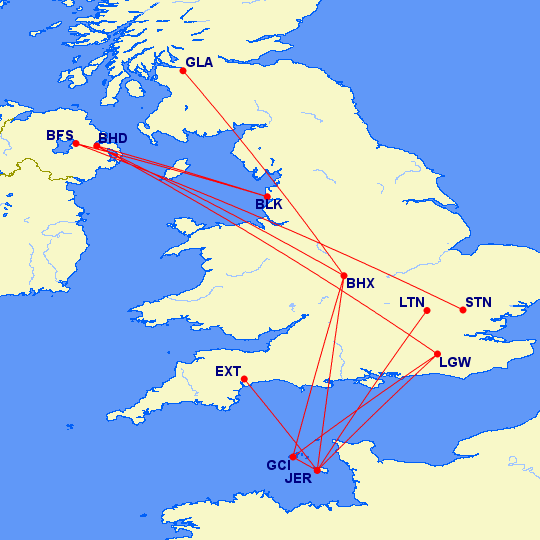 BAe-146-300 British Airways: 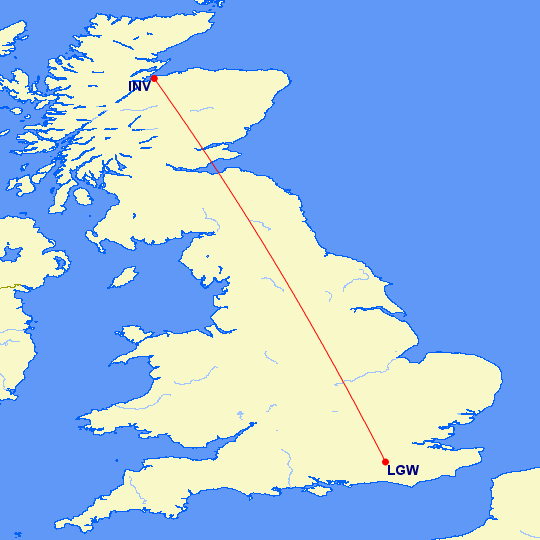 Shorts SD3-60\Fokker 27-500\DHC-8-300: 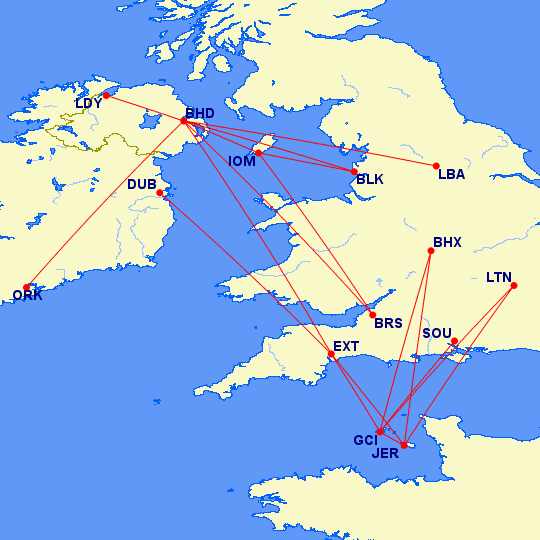 Download Jersey European Airways 1998 v2 flightplans here Download Jersey European Airways 1998 v2 flightplans here |
|
|
|
Post by chasensfo on Dec 28, 2022 9:38:22 GMT -5
\\South African Airways - SAA 1998 v2 (28DEC22; Re-ordered aircraft for better AI parking, found evidence of more old colors aircraft, changed cruise speeds to AIG standard, repaint links updated; FS9 version with FAJS code and P3Dv4\5 version with FAOR code included) \\South African Airways - SAA (1934 - Present) IATA: SA ICAO: SAA CALLSIGN: SPRINGBOK \\South African Airways Cargo (1993-2020) IATA: SA ICAO: SAAC CALLSIGN: SPRINGBOK \\South African Airways Cargo operated by Airworld (1998-2000) IATA: SA ICAO: SPZ (also use SAAC for parking) CALLSIGN: SPEED SERVICE \\South African Airways operated by South African Express Airways (1993 - Present) IATA: YB ICAO: EXY (and SAAX for parking) CALLSIGN: EXPRESSWAY \\South African Airways operated by SA Airlink (1992 - Present) IATA: 4Z ICAO: LNK (and SAAX for parking) CALLSIGN: LINK \\South African Airways Historic Flight Division (1984-2006) IATA: NONE ICAO: SAA (use SAAH for parking, and RAMP parking type) CALLSIGN: NONE (uses tail number) South African Airways, also known as SAA, is the national airline of South Africa and was the largest airline in Africa for most of its history. Starting operations in 1934, SAA is one of the world's oldest airlines still operating today. The airline was first formed with vintage props like the Ju-52 and DC-3 flying out of Johannesburg's Rand Airport (QRA), which today is replaced by JNB, with QRA becoming a general aviation airfield. Early on the airline was plagued with a string of fatal accidents, but growth continued with early larger, longer-range aircraft like the Avro York enabling SAA to embark on multi-stop long-haul international and overseas flights. The Avro York operated the airline's first flight to London in 1945 just after WWII. With the post-war surplus of transport aircraft, SAA quickly grew adding aircraft like the DC-3 and long-range DC-4 and expanding domestically and internationally. Around this time, the Palmietfontein Airport replaced Rand as the primary airport for Johannesburg and the main hub for SAA. Jet aircraft arrived early on, with SAA putting the Comet into service in 1952, cutting the journey to London to a 24-hour trip with 5 fuel stops en route across Africa and Europe. Changes to the routing eventually shortened this journey to just 18 hours, and a multi-stop service to Perth, Australia (PER) was also started with the Comets. However, within a few years, the Comet had proved a disaster, with many operators, including SAA, losing aircraft to fatal accidents that were often attributed to structural failure. The current OR. Tambo Airport(JNB) opened around the time the Comets were disposed of, and operations moved yet again to this new airport while SAA sat out the jet age for a few years until 707s arrived in the 1960s. From there, the airline's global network began to take shape and modern aircraft quickly replaced older props. By 1974, the airline was flying as far as Hong Kong, Brazil, and the United States. However, as the airline expanded, politics involved with South Africa's highly controversial apartheid, or the systematic segregation of black citizens, began to pose problems as a growing list of nations began to refuse SAA the right to overfly their country. For over a decade, SAA's expansion would be limited by this, and sometimes several hours were added to routes as the airline was forced to send its aircraft out over the Atlantic and Indian Oceans away from the African mainland for the most part on flights to Europe, Asia, and North America. This also, of course, severely limited SAA's refueling options, which was a huge issue given South Africa's geographical isolation from the Western world and the limitations of jetliners in the 1970s and 1980s. The airline had been an early customer of the 747SP, which provided the ability for non-stop flights to several markets, but the airline quickly ran out of places to fly them to. By 1987, even the USA and Australia, along with much of Asia, had banned all South African air carriers in protest to apartheid. During this period, SAA largely focused on domestic flights and its few remaining long-haul routes and did not fly many international flights within Africa. Terrorism began to target SAA offices, so much so that the tragic fatal crash of a 747 Combi in 1987, which turned out to be caused by toxic fumes emitting from a cargo hold fire incapacitating passengers and crew, was widely thought to be an act of terrorism for years until the investigation was concluded. 1990 brought about the start of the end of apartheid, and slowly, the world began to re-open to South Africa. In 1991, the first 747-400 arrived, allowing the airline to fly non-stop to London, and to New York(JFK) either non-stop or via Cabo Verde(SID) which allowed SAA landing rights. The sudden approval to land in various African nations lead SAA to establish 2 regional carriers to begin both domestic and local international flying in the early 1990s; SA Airlink, which would fly smaller props, and SA Express(later South African Express Airways), who would fly larger props and later jets. The airline also started a cargo division in 1993, mostly serving a few points in Europe. By the mid-1990s, the airline was accepting Airbus A320 deliveries to eventually replace the aging 737-200 fleet, and flying several variants of the 747(747SP, 747-200B, 747-300, 747-400) alongside some 767-200s on long haul flights. Codeshares with airlines like Lufthansa and American Airlines began, and as the future finally looked bright for SAA, the company decided to do a total re-branding and introduced a new livery in 1997. Painting happened fast, with the carrier eager to erase its past, and by 1998, there were many aircraft in the new livery, while plenty also wore the old 1983-introduced livery as well. 1 747-300, named Ndizani, wore a very colorful special livery while an A300B4, named Waterbok, wore a special livery with various photos all across the fuselage. The airline had several Boeing 777s on order at the time, but these were never delivered, with the airline instead adding the Airbus A340 and A330 to its long-haul fleet in the future. A 3rd 767-200 joined SAA's own 2 767-200s in 1998, leased from LAM who was using a 747SP leased from SAA in place of their 767. The airline had not only reinstated most of its global network by this time but even expanded, with flights to the likes of Japan(KIX) and Argentina(EZE). The original jet route to PER was also still being operated, with an extension to Sydney(SYD). Cape Town(CPT) and Durban(DUR) were secondary hubs with international flights, while various coastal cities were operated as focus cities with domestic flights across the nation. The small cargo fleet was mostly in the new colors by 1998 and included a 727-200 operated by South African carrier Airworld on behalf of SAA. All cargo flights are representative, but routing and destinations are real, as well as flight numbers in some cases. In addition to these flights, South African Airways Historic Flight Division was flying a Ju-52 and a pair of DC-3s and DC-4s on historical pleasure flights and had been since 1984. In the mid-1990s, some of these aircraft even made Atlantic crossings, flying as far as Oshkosh, Wisconsin (OSH) for the Air Venture air show! From what I found, the aircraft mostly flew domestically to a handful of cities on tours in the late 1990s, and I have included them. Based in JNB, the aircraft frequented the Rand Airport(and eventually moved there), so I have most of them doing touch-and-go landings there once per week. This program ended in 2006. SAA would grow over the years to join the Star Alliance and expand to Washington DC(IAD) and other airports by the end of the 1990s. However, from 2004-2020, the airline was in a constant state of financial trouble. Though newer aircraft like the Airbus A350 arrived to replace the gas-guzzling A340s and 747s, it was too little too late, and SAA shut down during the COVID-19 crisis in 2020. It was announced that SAA would liquidate and a new airline would be formed from its assets, however, just before the start of liquidation, the airline found the funding to continue, and announced domestic services would resume in 2021 followed by international operations at a later date. Today, the carrier operates with a very small fleet of Airbuses on regional and domestic routes. Flightplans by Vadim Stepanyuk and myself. Most modern repaints are available, and mostly courtesy of Michael Pearson. The Ju-52 and the Airworld 727-200 are still needed. The following repaints are available: FAIB 747-400: library.avsim.net/search.php?SearchTerm=faib_747-400_saa.zip&CatID=root&Go=SearchFAIB 747-300: library.avsim.net/search.php?SearchTerm=faib_747-300_saa.zip&CatID=root&Go=SearchFAIB 747-200: library.avsim.net/search.php?SearchTerm=faib_747-200_saa.zip&CatID=root&Go=SearchFAIB 747-200 Cargo: library.avsim.net/search.php?SearchTerm=faib_747-200_saa_cargo.zip&CatID=root&Go=SearchFAIB 747SP: library.avsim.net/search.php?SearchTerm=faib_747sp-44_saa.zip&CatID=root&Go=SearchAIA 747-200\300\400\767-200 + PAI 747SP by RetroAI member 747sp (FS9 Native): drive.google.com/drive/folders/1SS2UjkVquYgRzuMnHKo_5n7pxXUKoIOMPAI 747SP (Old colors by RetroAI member 747sp; FS9 Native): drive.google.com/drive/folders/1SS2UjkVquYgRzuMnHKo_5n7pxXUKoIOMFAIB 767-200: library.avsim.net/search.php?SearchTerm=faib_767-200_saa.zip&CatID=root&Go=SearchTFS A300B4: library.avsim.net/search.php?SearchTerm=tfs_a30b_saa.zip&CatID=root&Go=SearchTFS A300B4 Cargo: library.avsim.net/search.php?SearchTerm=tfs_a30b_saa_cargo.zip&CatID=root&Go=SearchFAIB A320: library.avsim.net/search.php?SearchTerm=faib_a320-200_saa.zip&CatID=root&Go=SearchFAIB 737-200: library.avsim.net/search.php?SearchTerm=faib_737-200_saa.zip&CatID=root&Go=SearchFAIB 737-200 Cargo: library.avsim.net/search.php?SearchTerm=faib_737-200_saa_cargo.zip&CatID=root&Go=SearchRFSL CRJ-200: mpai4fs.com/2022/12/27/south-african-express-crj-200/AIM CRJ-200 (FS9 Native): library.avsim.net/search.php?SearchTerm=aimcr2_exy.zip&CatID=root&Go=SearchTFS DHC-8-300: mpai4fs.com/2022/12/27/south-african-express-dhc-8-300/TFS DHC-8-300 (FS9 Native): library.avsim.net/search.php?SearchTerm=aidh3exy.zip&CatID=root&Go=SearchTFS DHC-8-300 + DJC Jetstream 41 + FMAI Do228 old colors by RetroAI member 747sp (FS9 Native): drive.google.com/drive/folders/1SS2UjkVquYgRzuMnHKo_5n7pxXUKoIOMDJC Jetstream 41 (1997 colors; FS9 Native): library.avsim.net/search.php?SearchTerm=djc41lnk.zip&CatID=root&Go=SearchDC-3\DC-4 (part of a large 50s AI package) by Tom Gibson and CalClassics: www.calclassic.com/files/ai2k41.zip747-400: 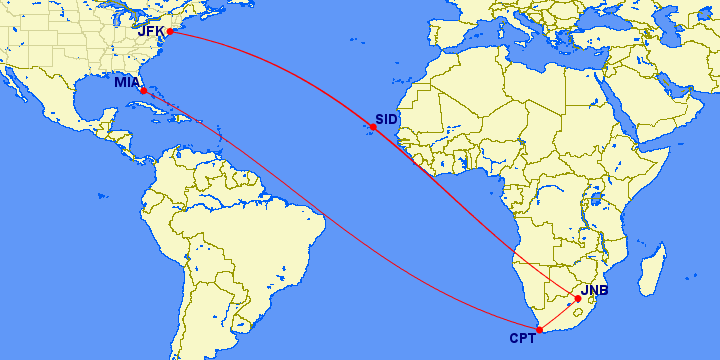 747-300: 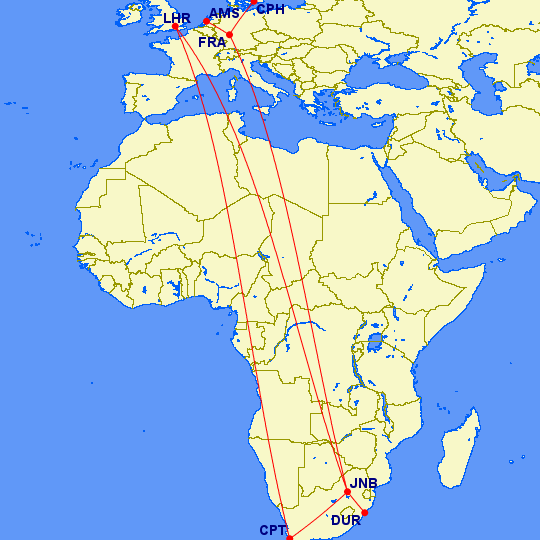 747-200B:  747-200 Cargo:  747SP: 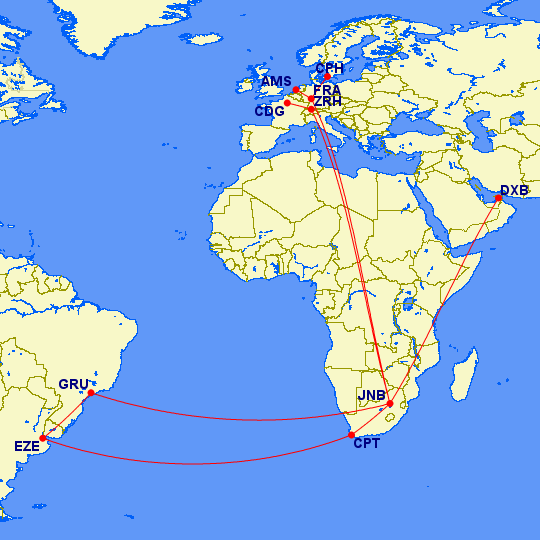 767-200:  A300B:  A300B4 Cargo: 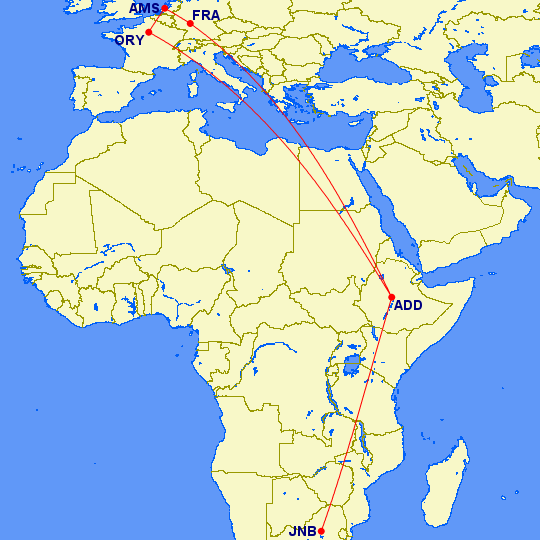 727-200 Cargo operated by Airworld:  A320:  737-200:  737-200 Cargo: 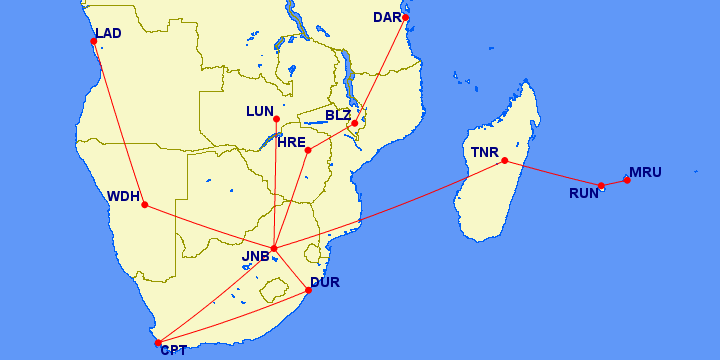 CRJ-200 operated by South African Express Airways: 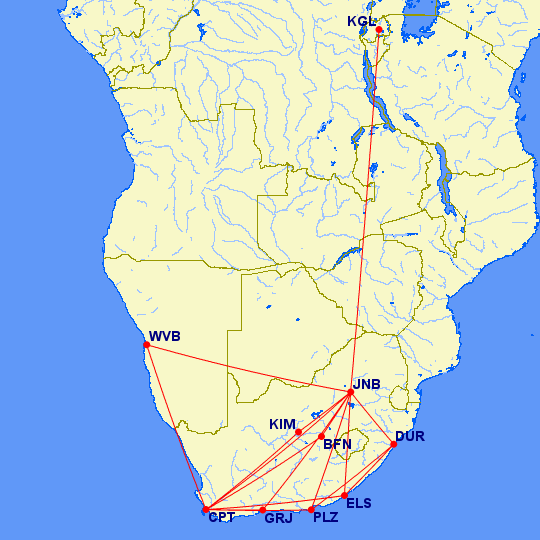 DHC-8-300 operated by South African Express Airways:  Jetstream 41 operated by SA Airlink: 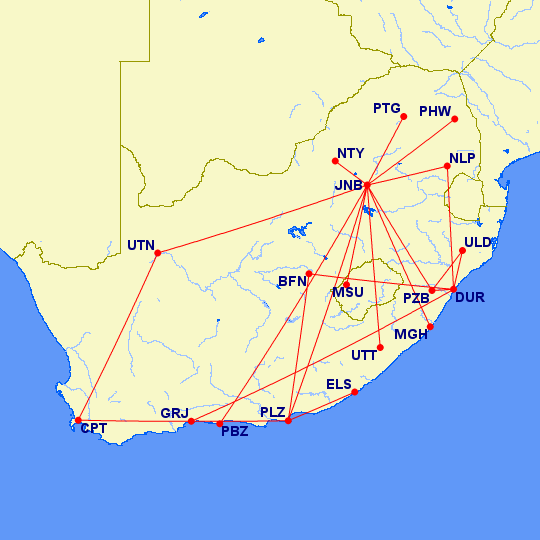 Do-228-100\200 operated by SA Airlink: 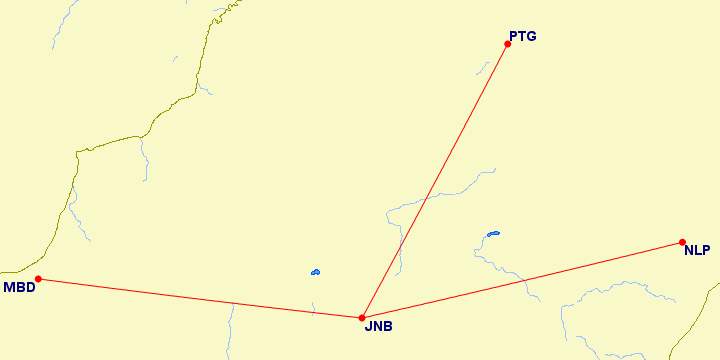 Ju-52\DC-3\DC-4 operated by Historic Flight Division: 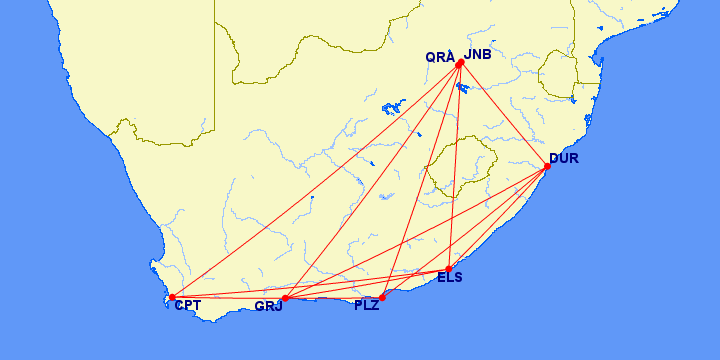 Download South African Airways SAA 1998 v2 Flightplans here Download South African Airways SAA 1998 v2 Flightplans here |
|
|
|
Post by sakura on Dec 28, 2022 13:00:43 GMT -5
Wasn't the Yak 42 in serviice for Aeroflot at the time?
|
|
|
|
Post by chasensfo on Dec 28, 2022 14:16:52 GMT -5
Wasn't the Yak 42 in serviice for Aeroflot at the time? It isn't listed in the flight schedule. I think the Yak 42s had mostly gone to the many, many start-up carriers between 1991 and 1995. I don't recall seeing any late 90s photos of them... |
|















































































